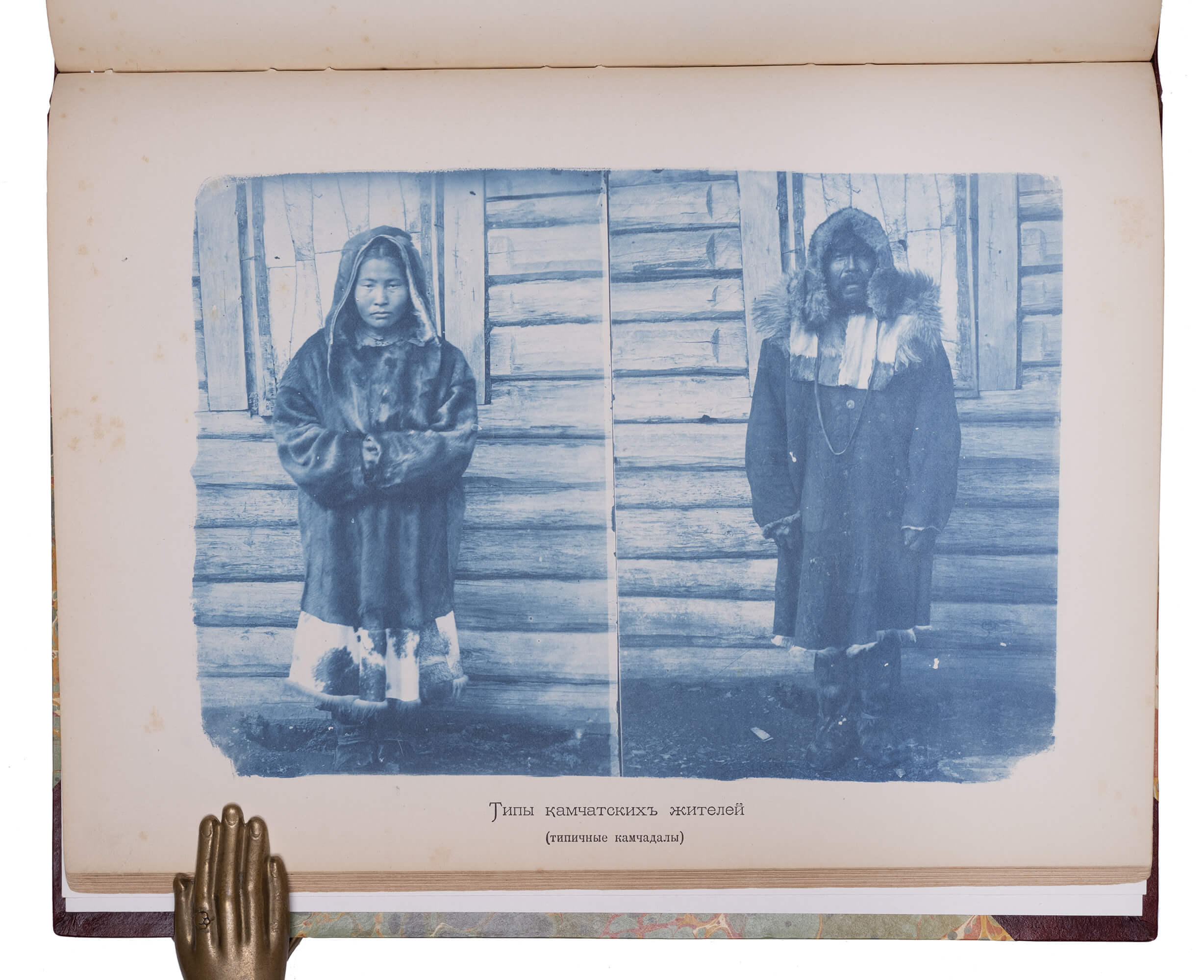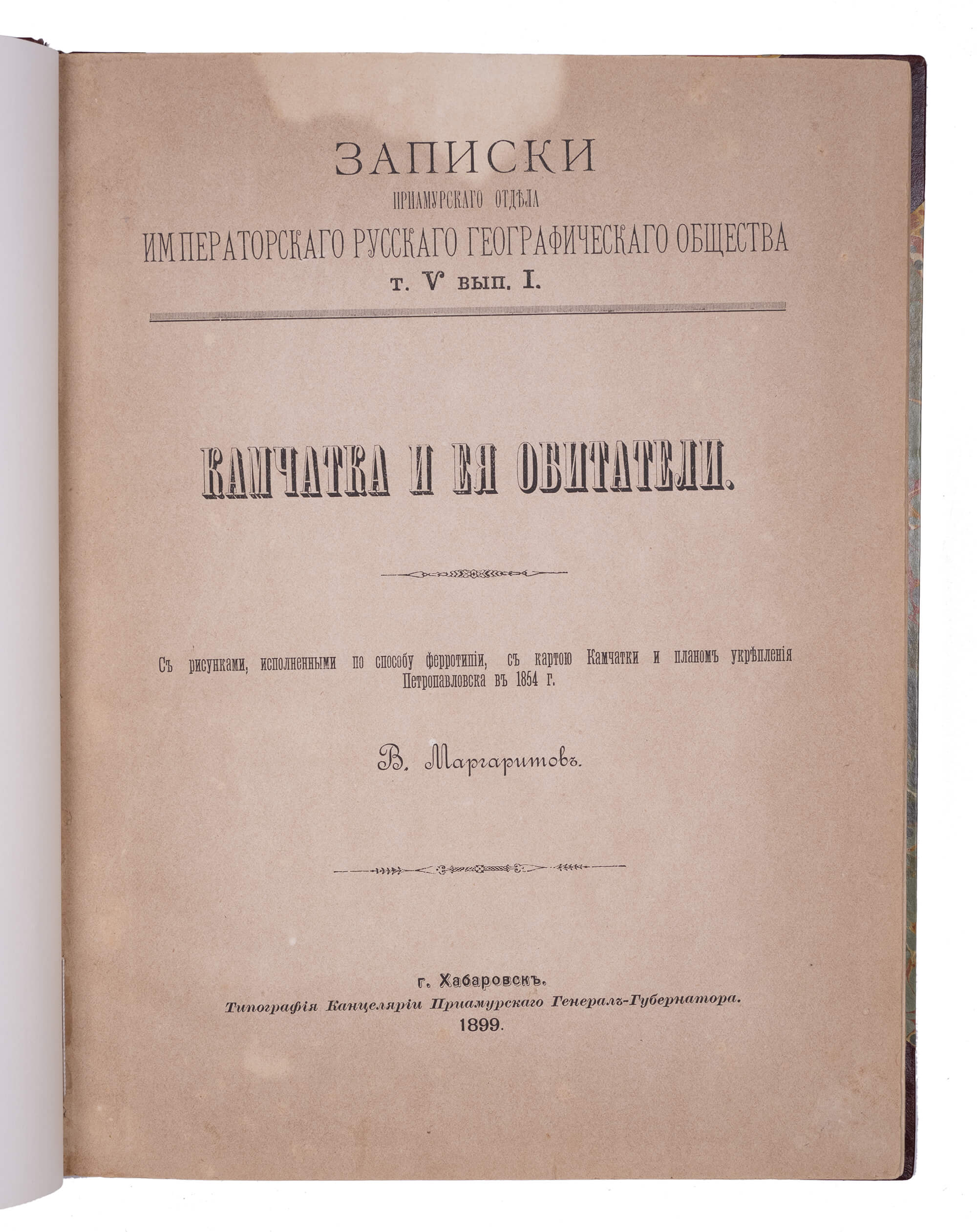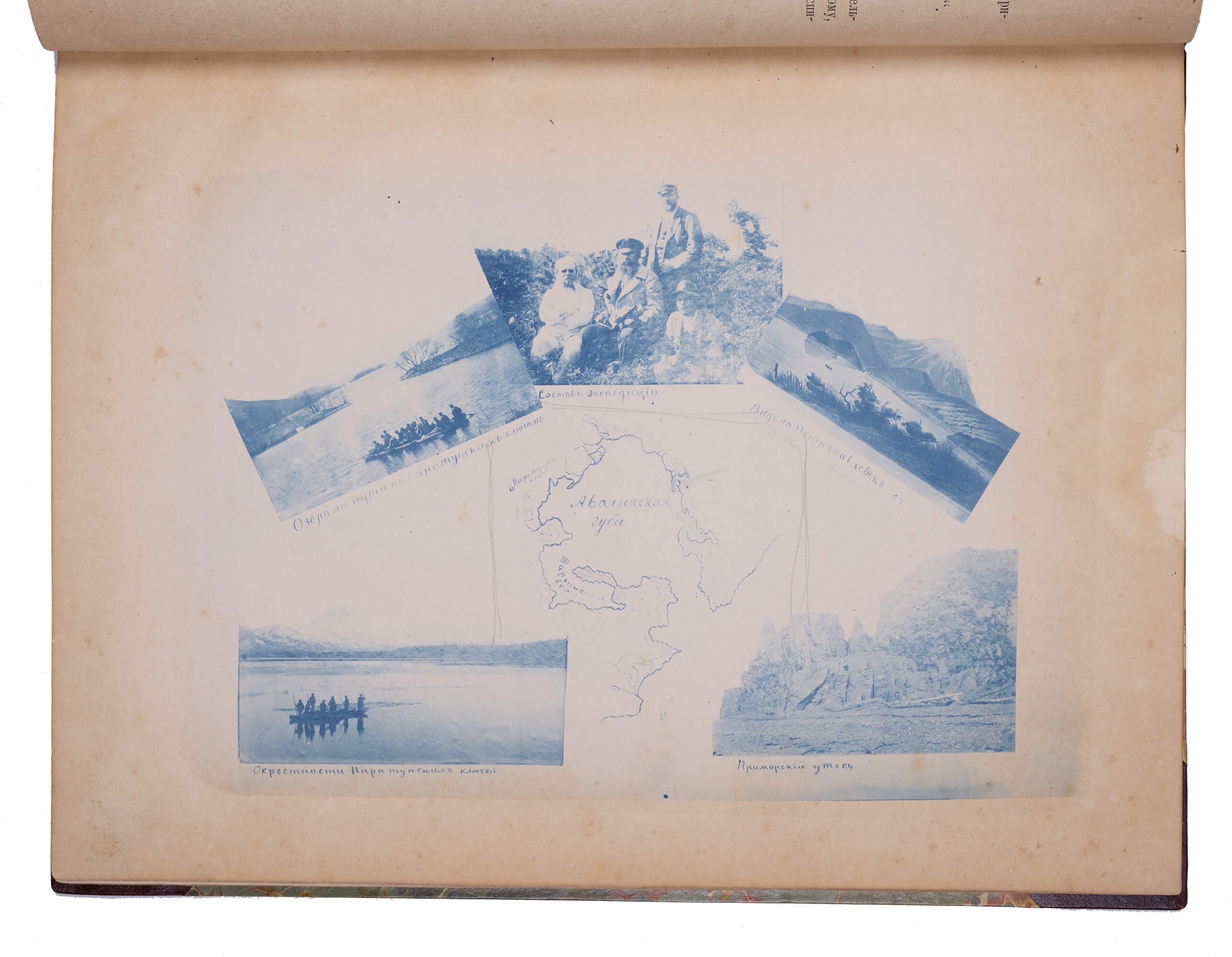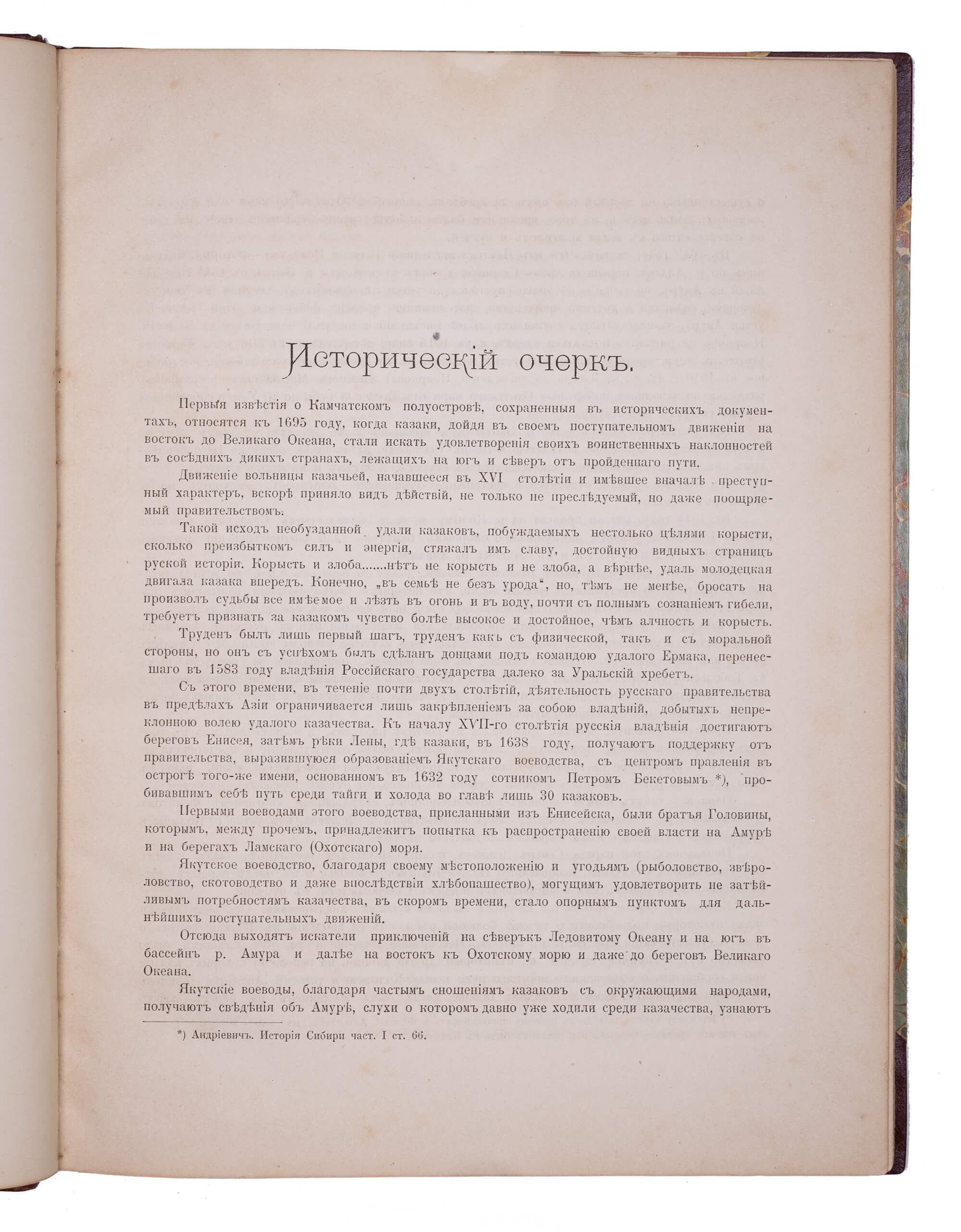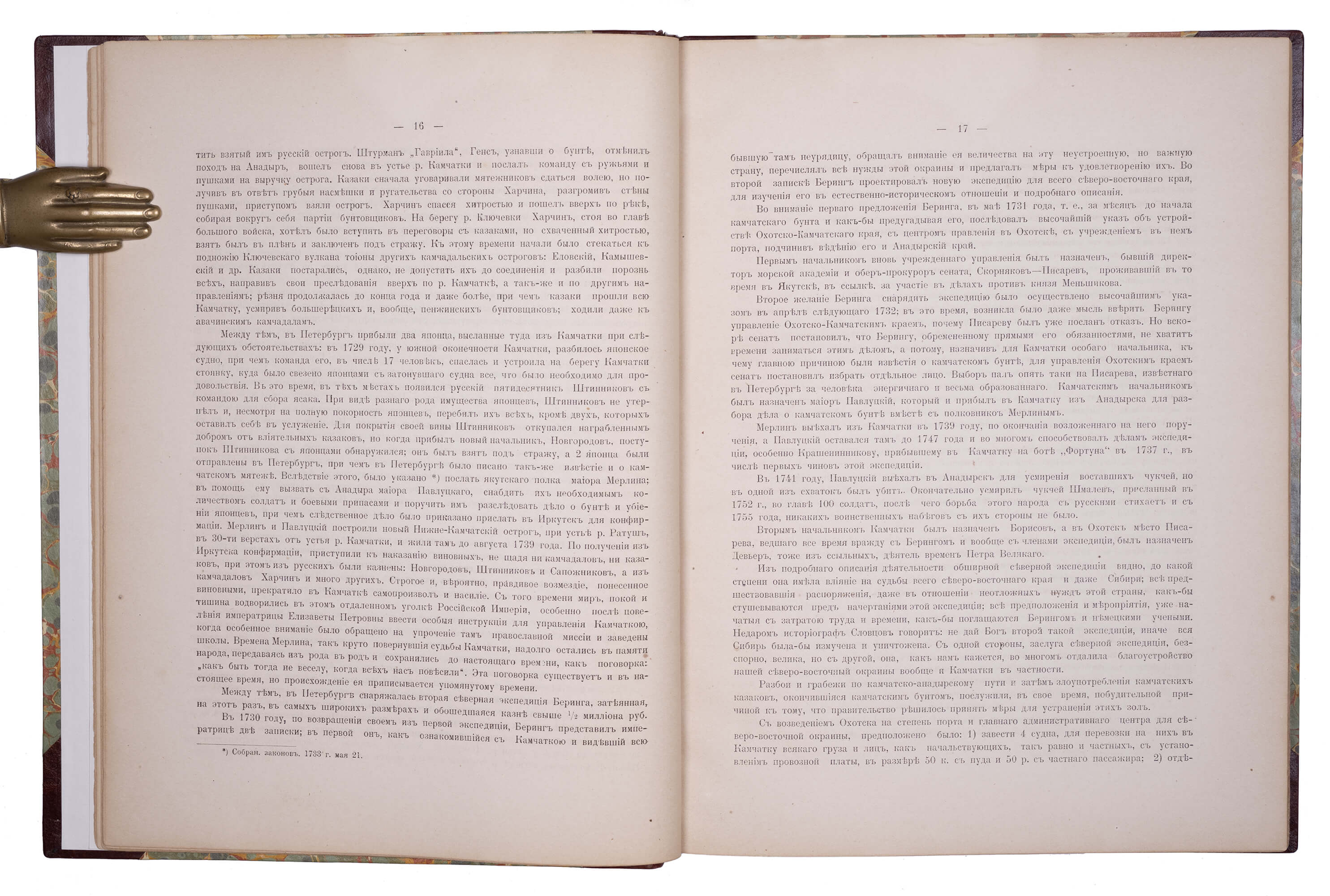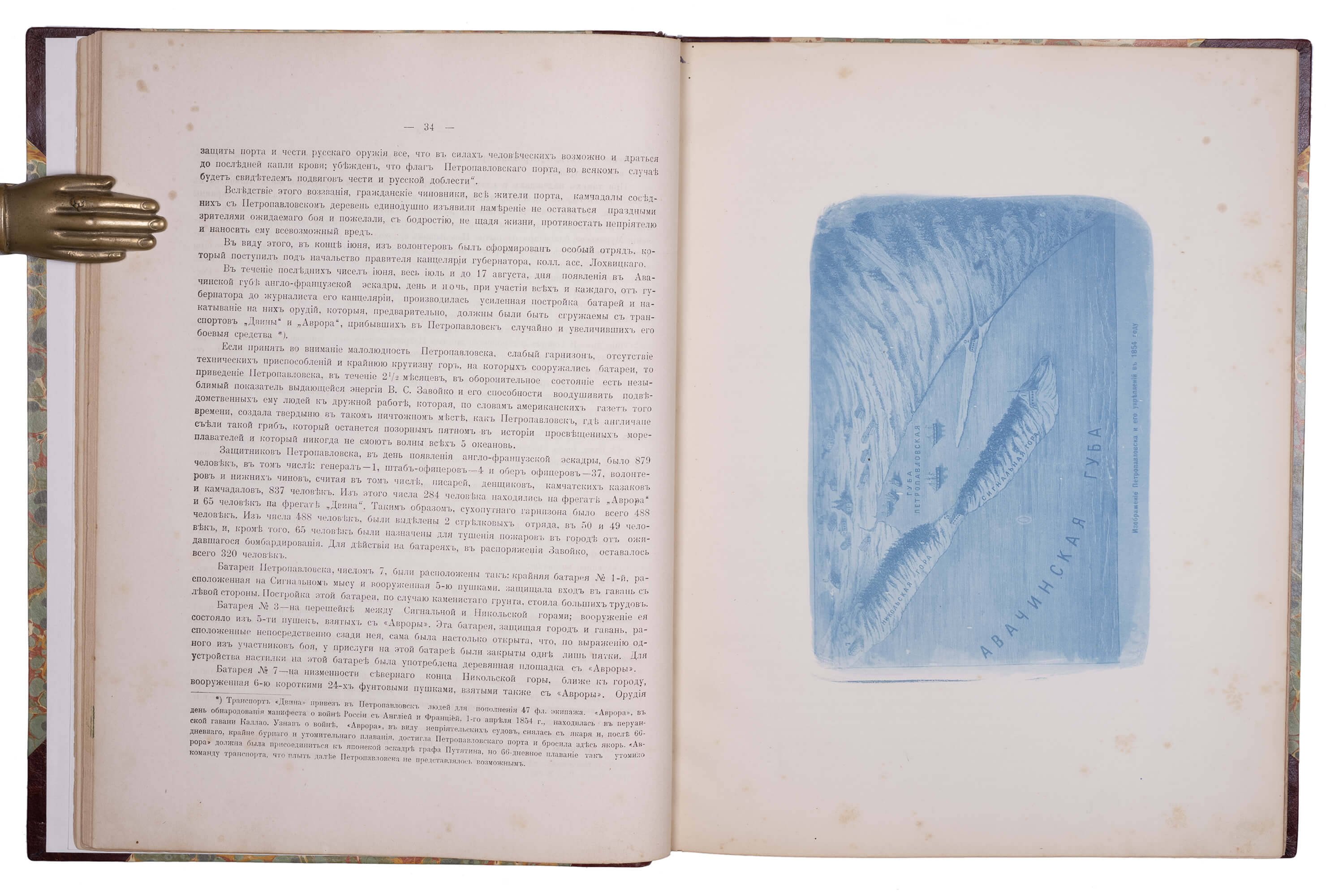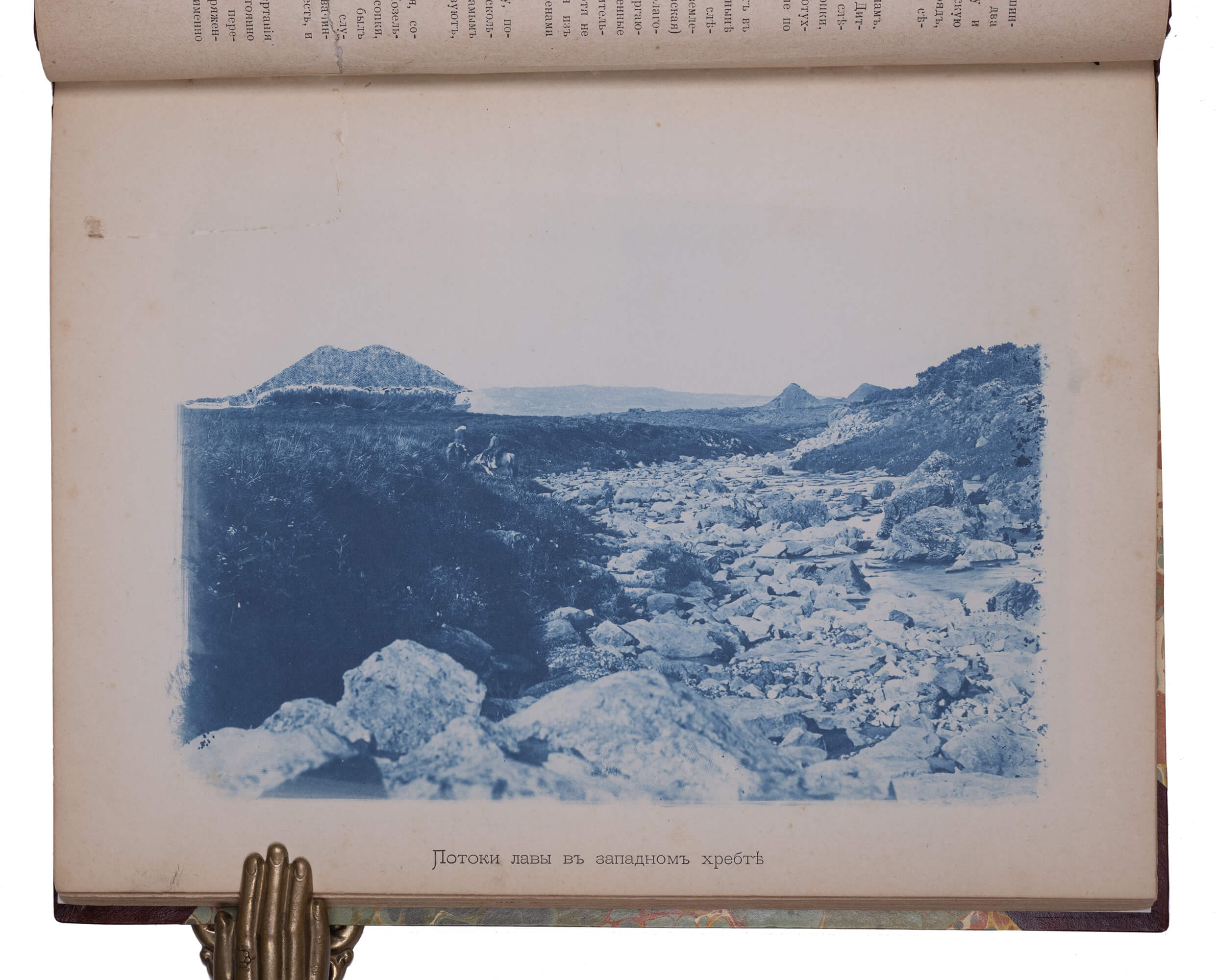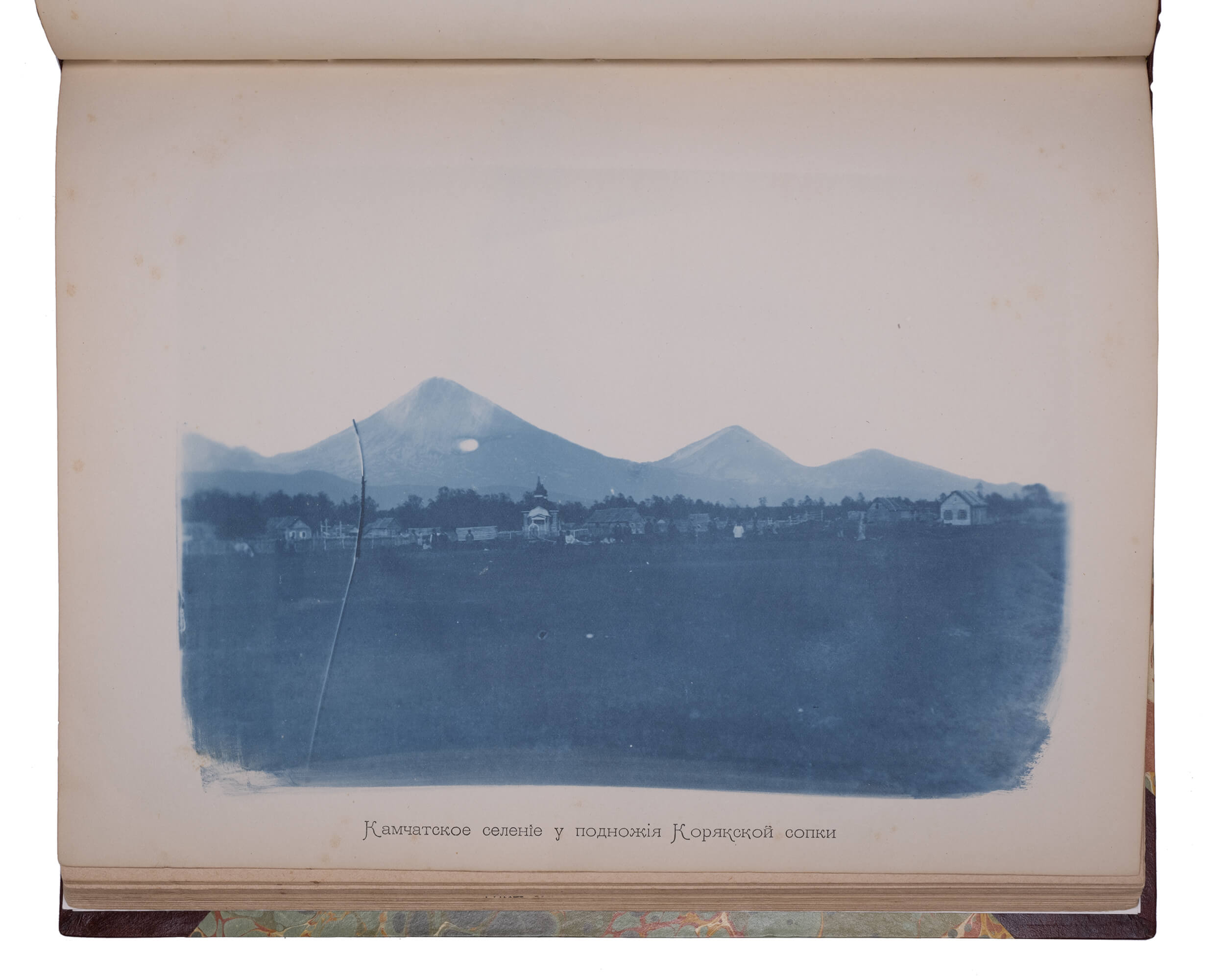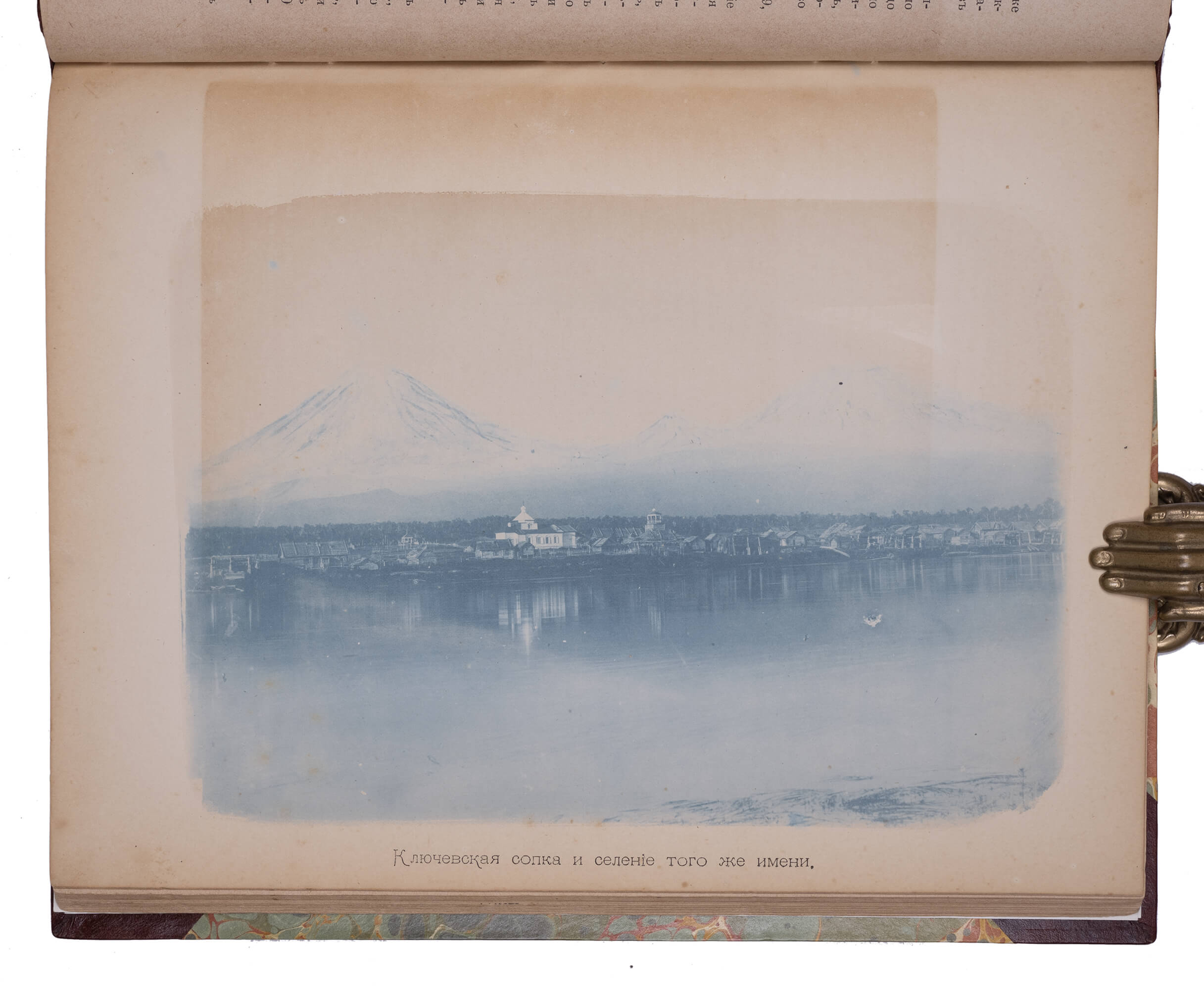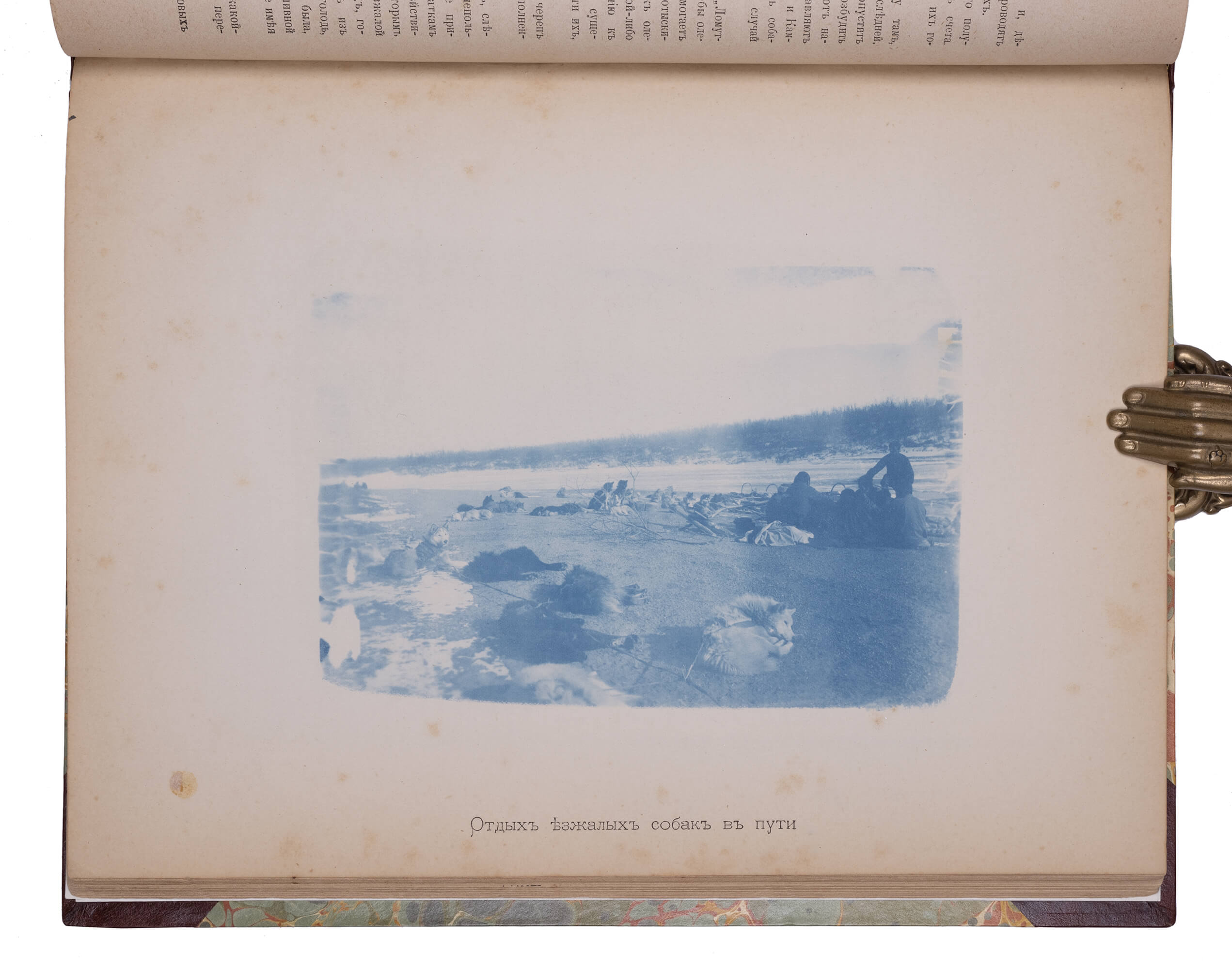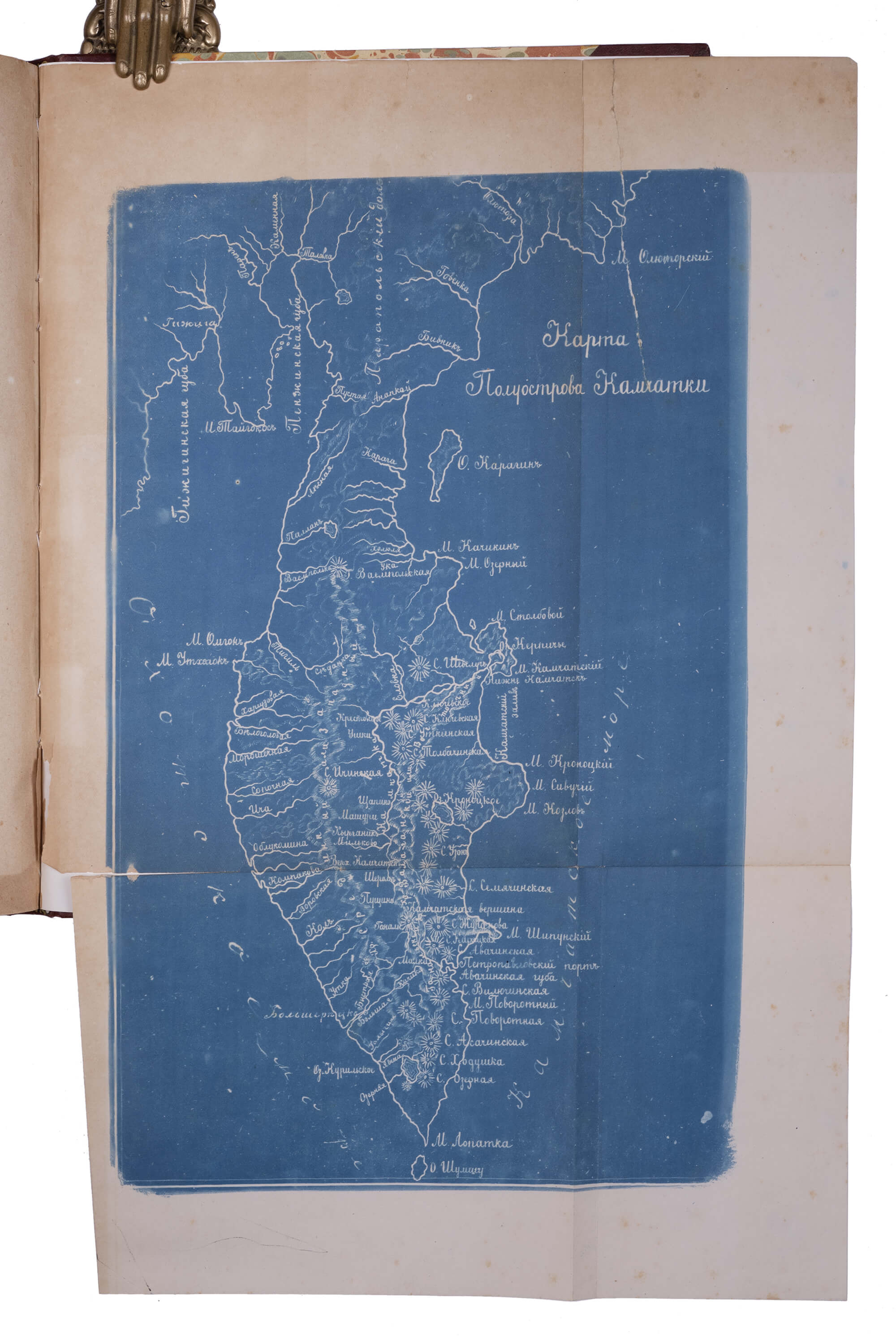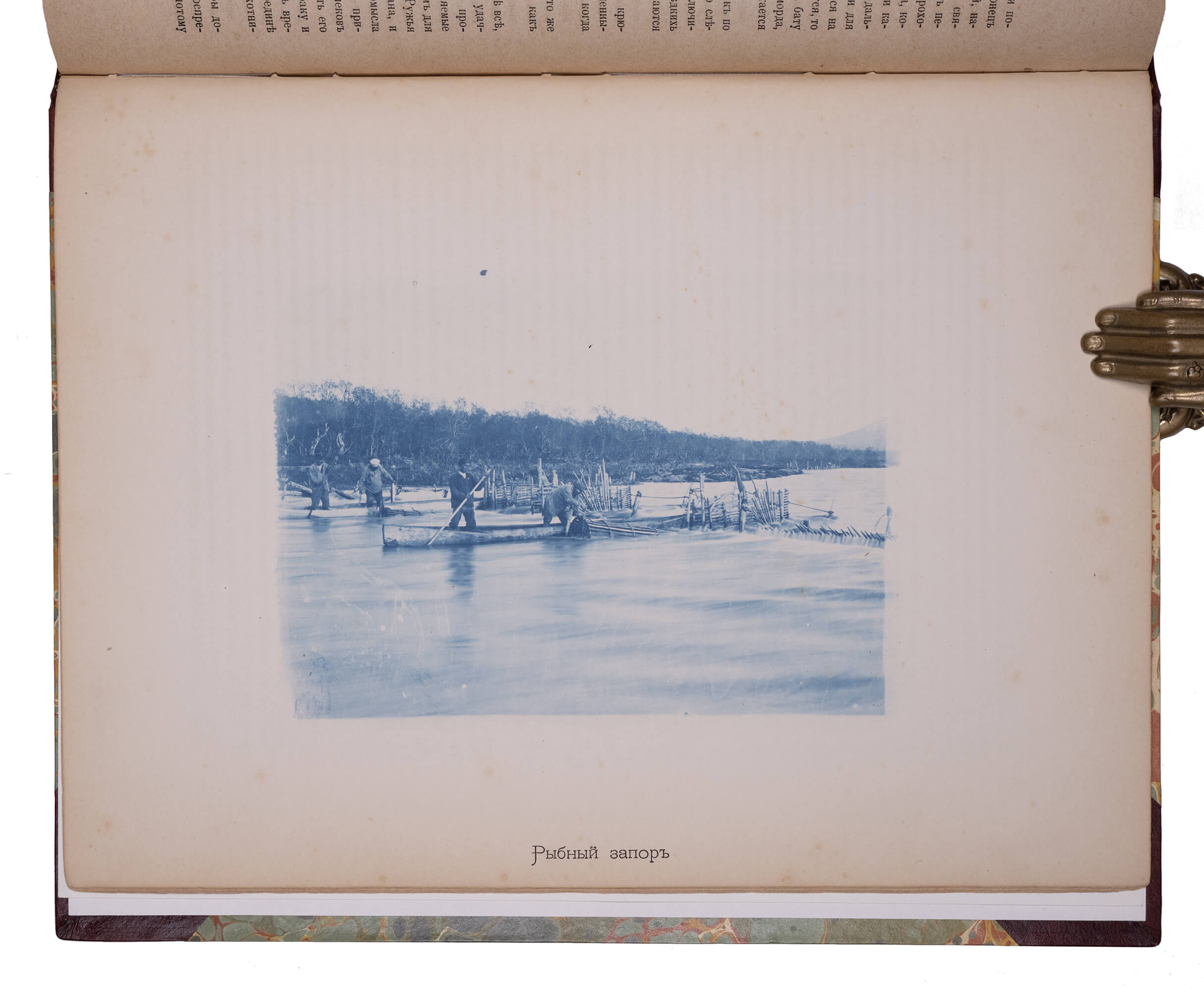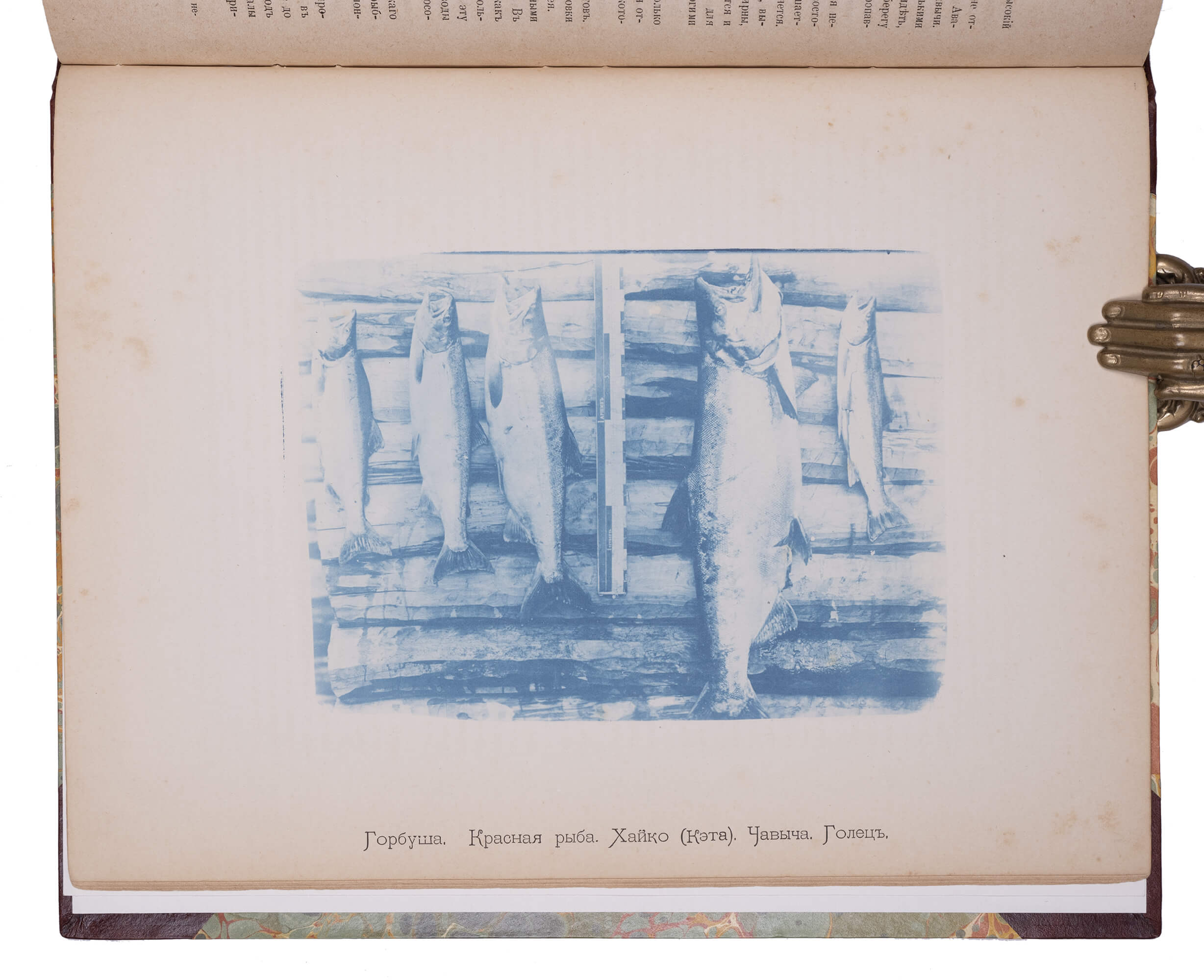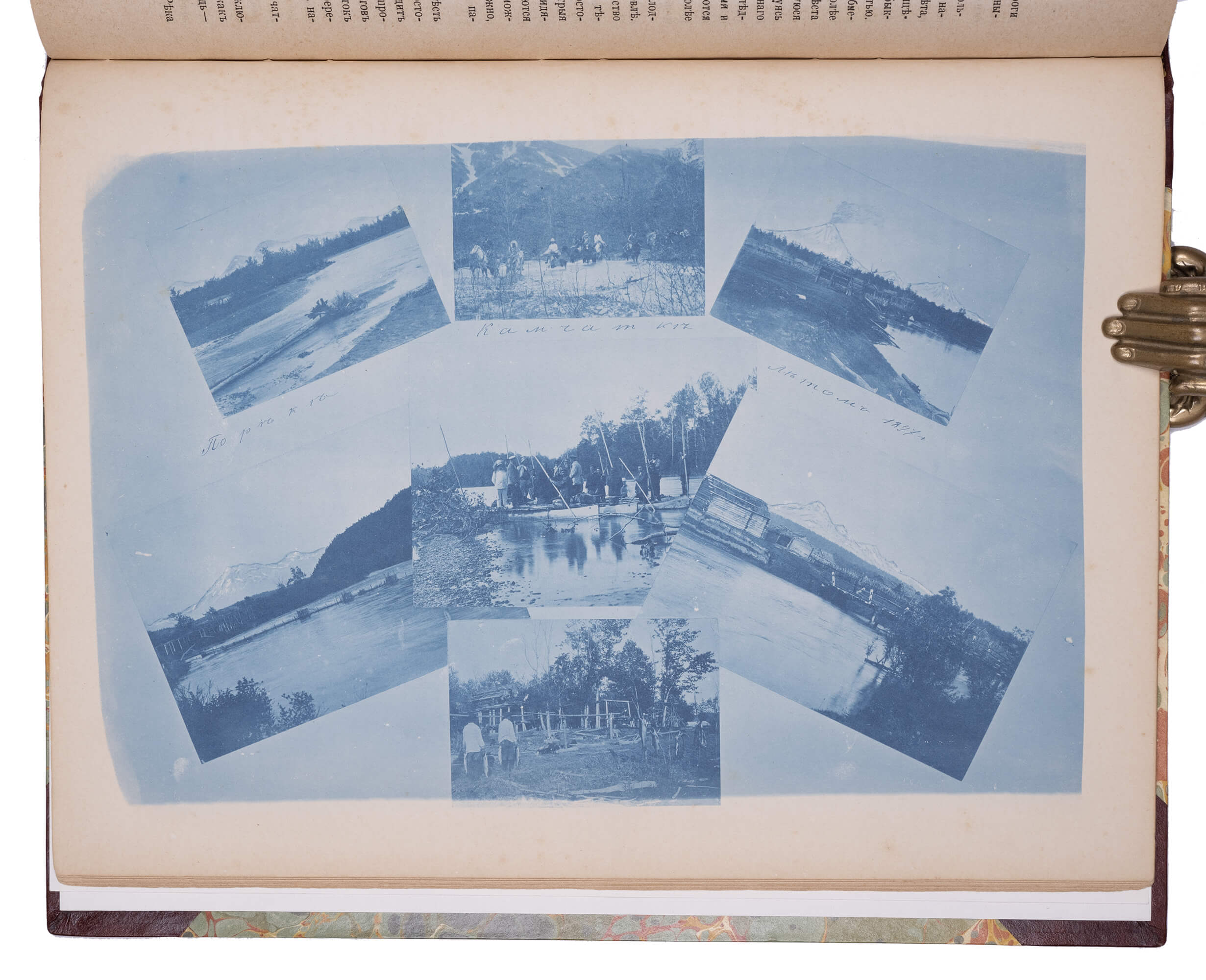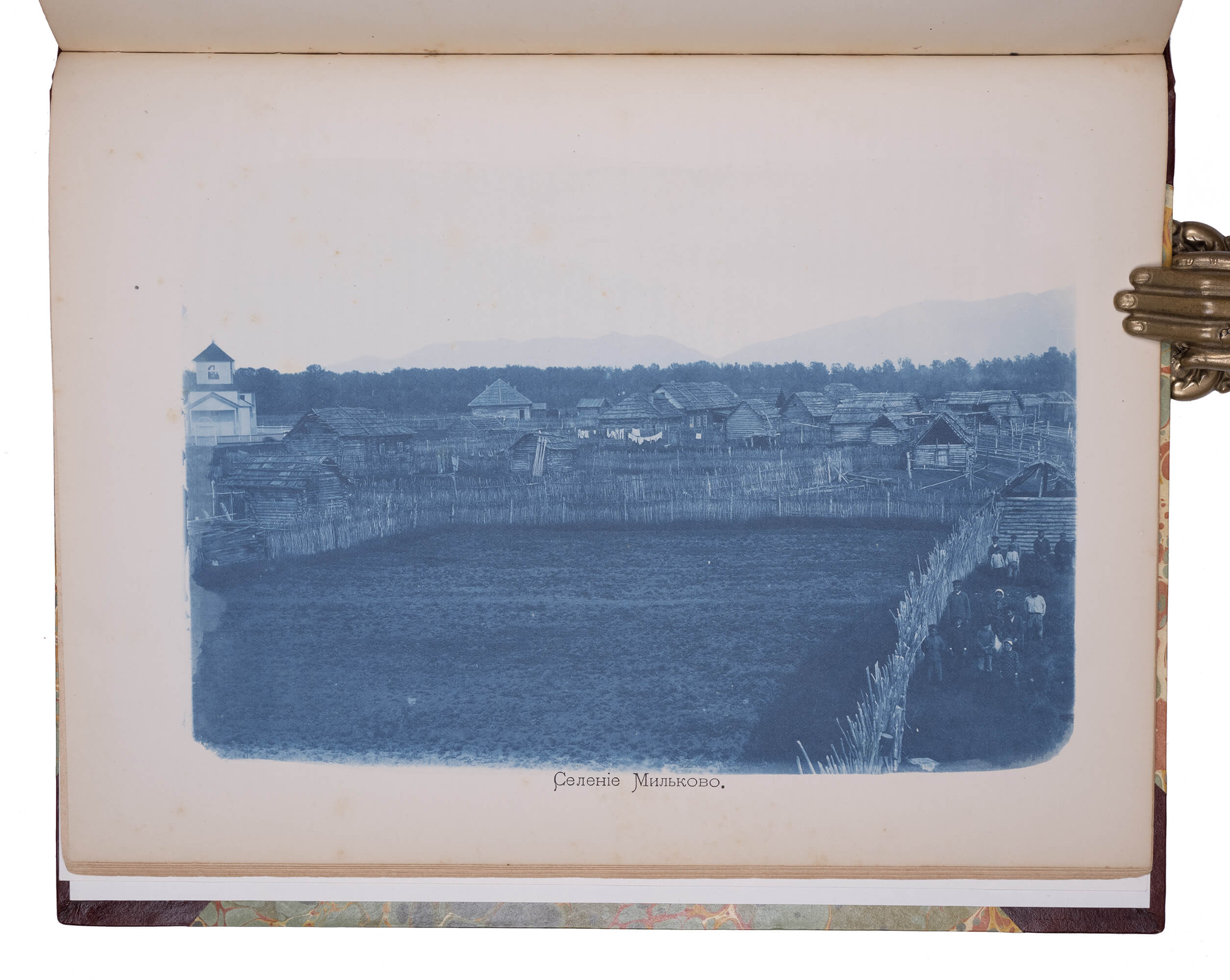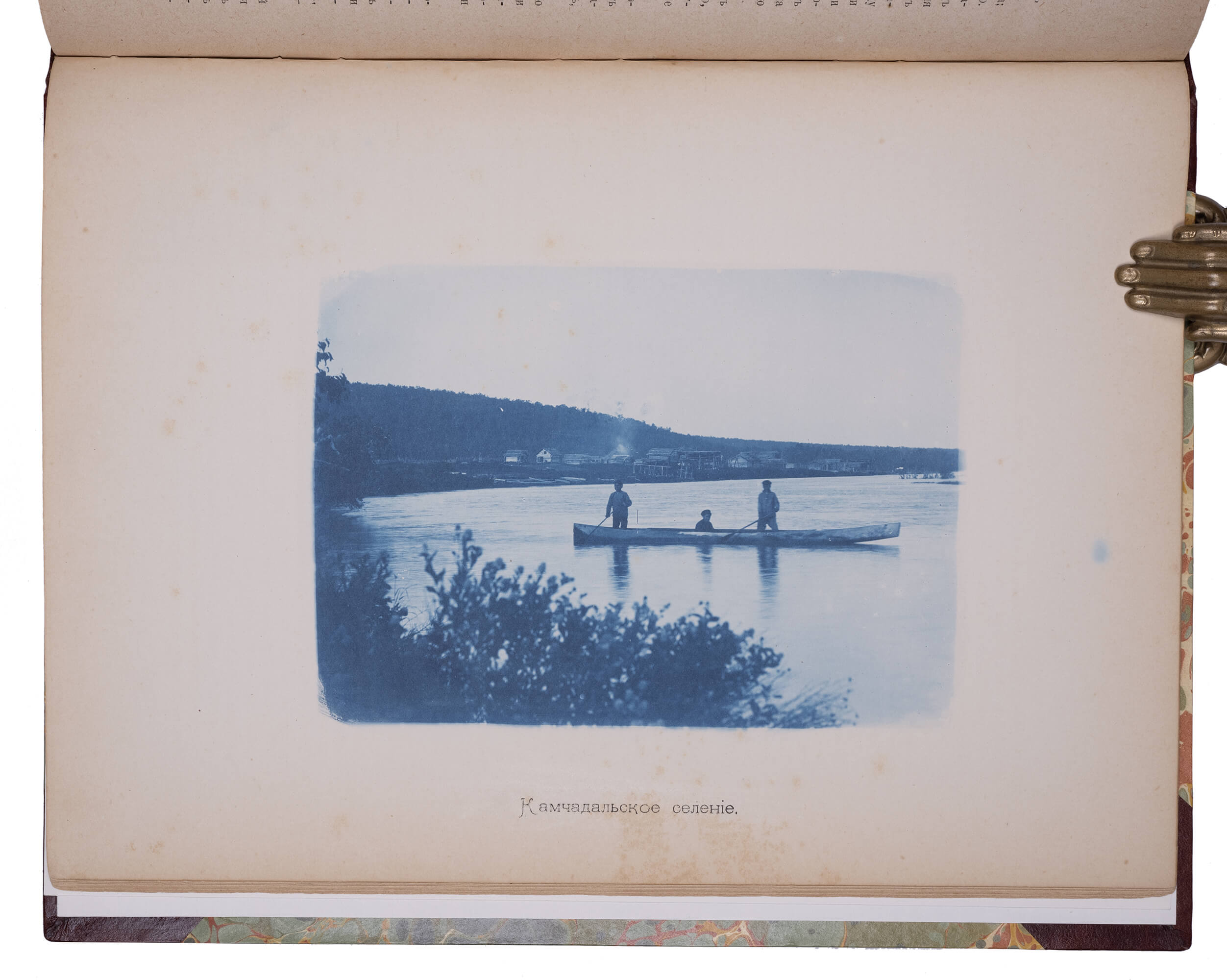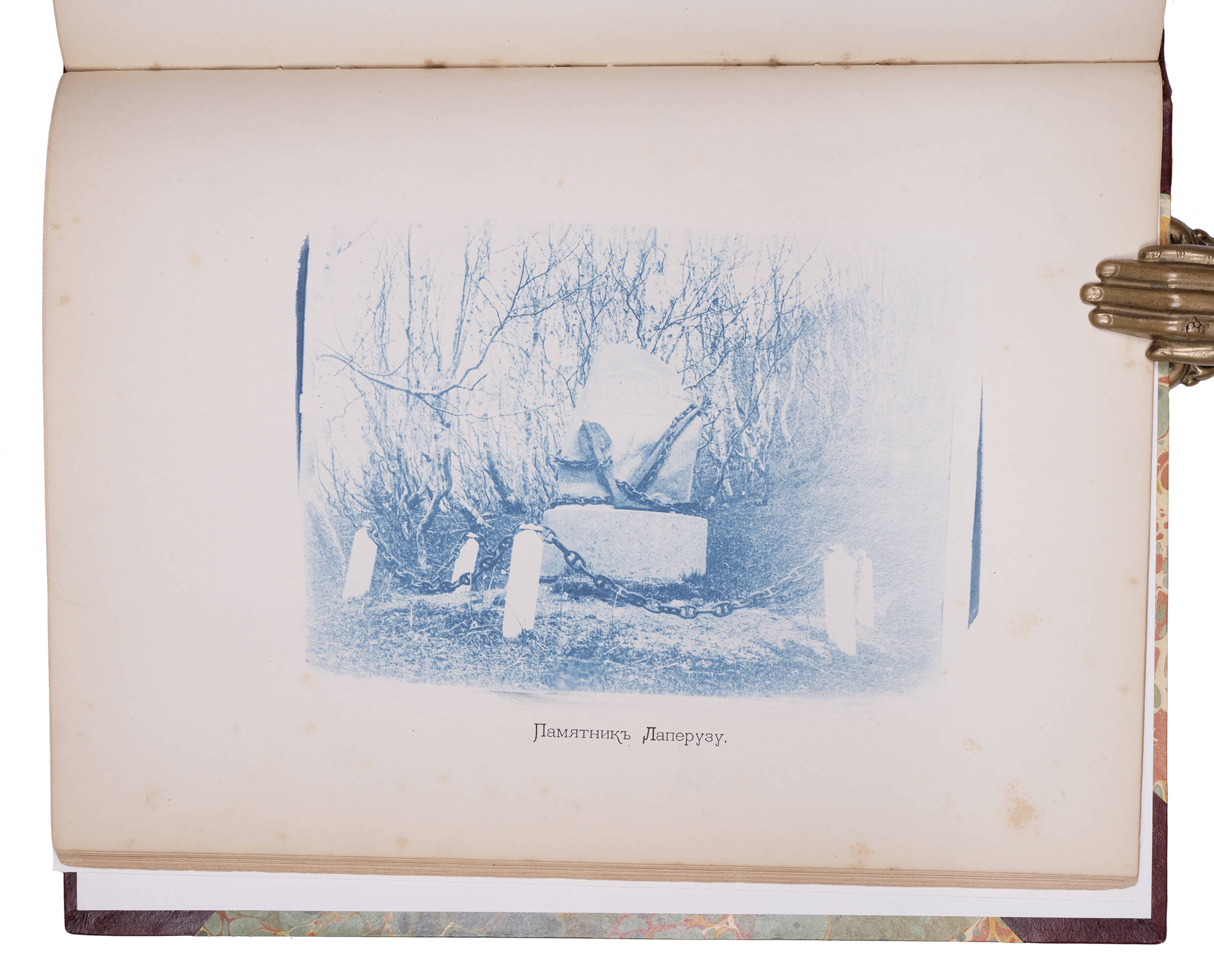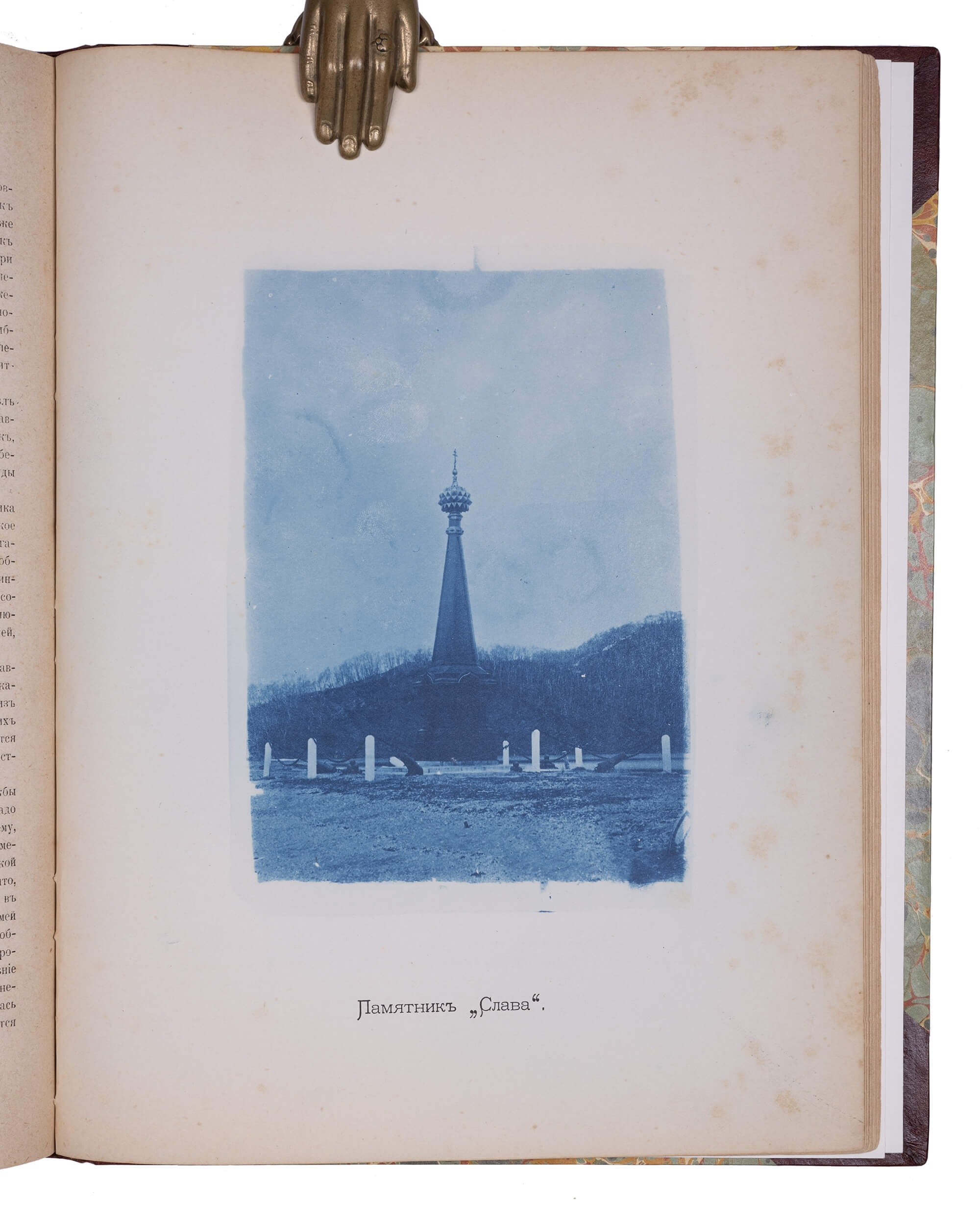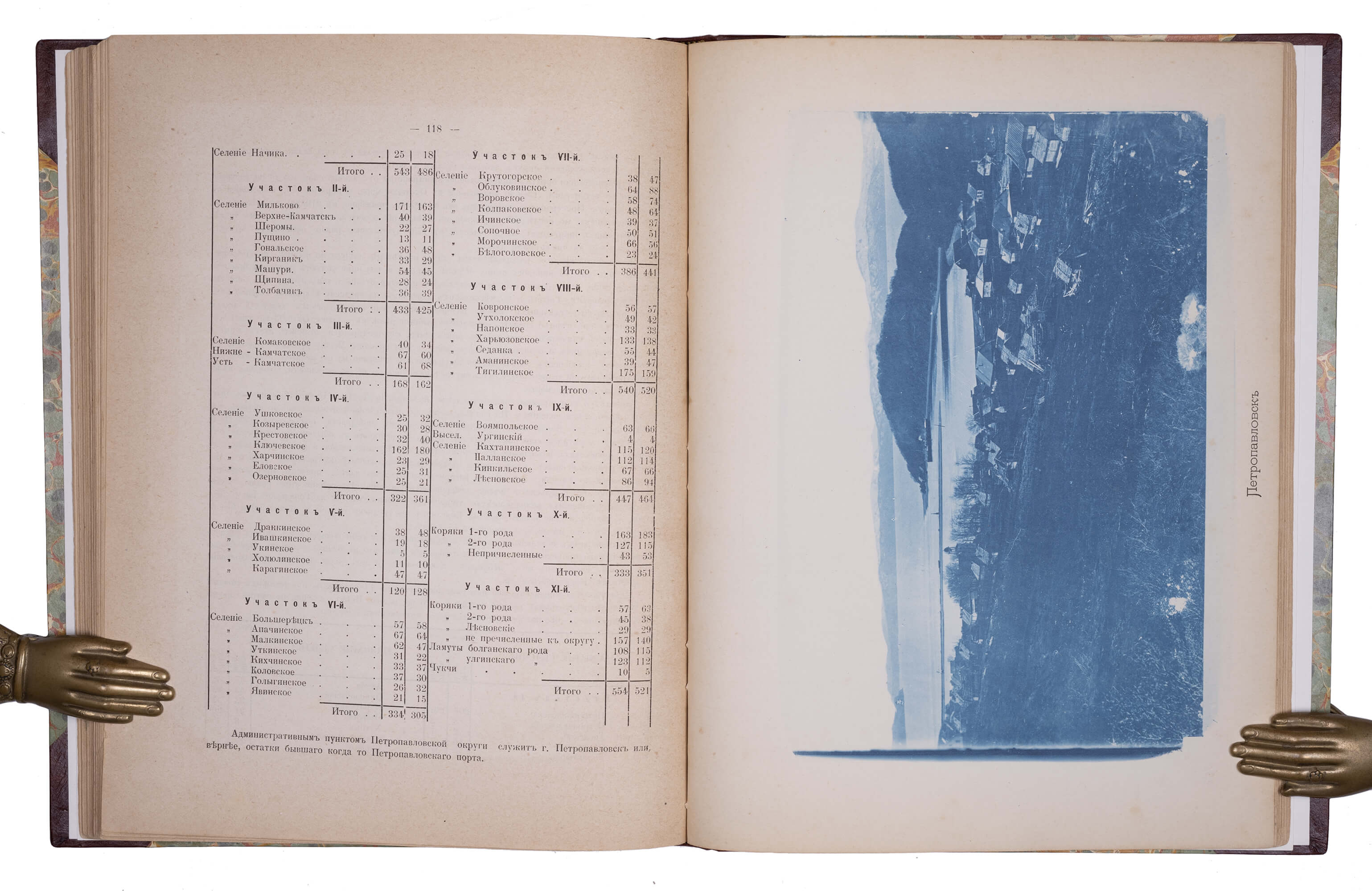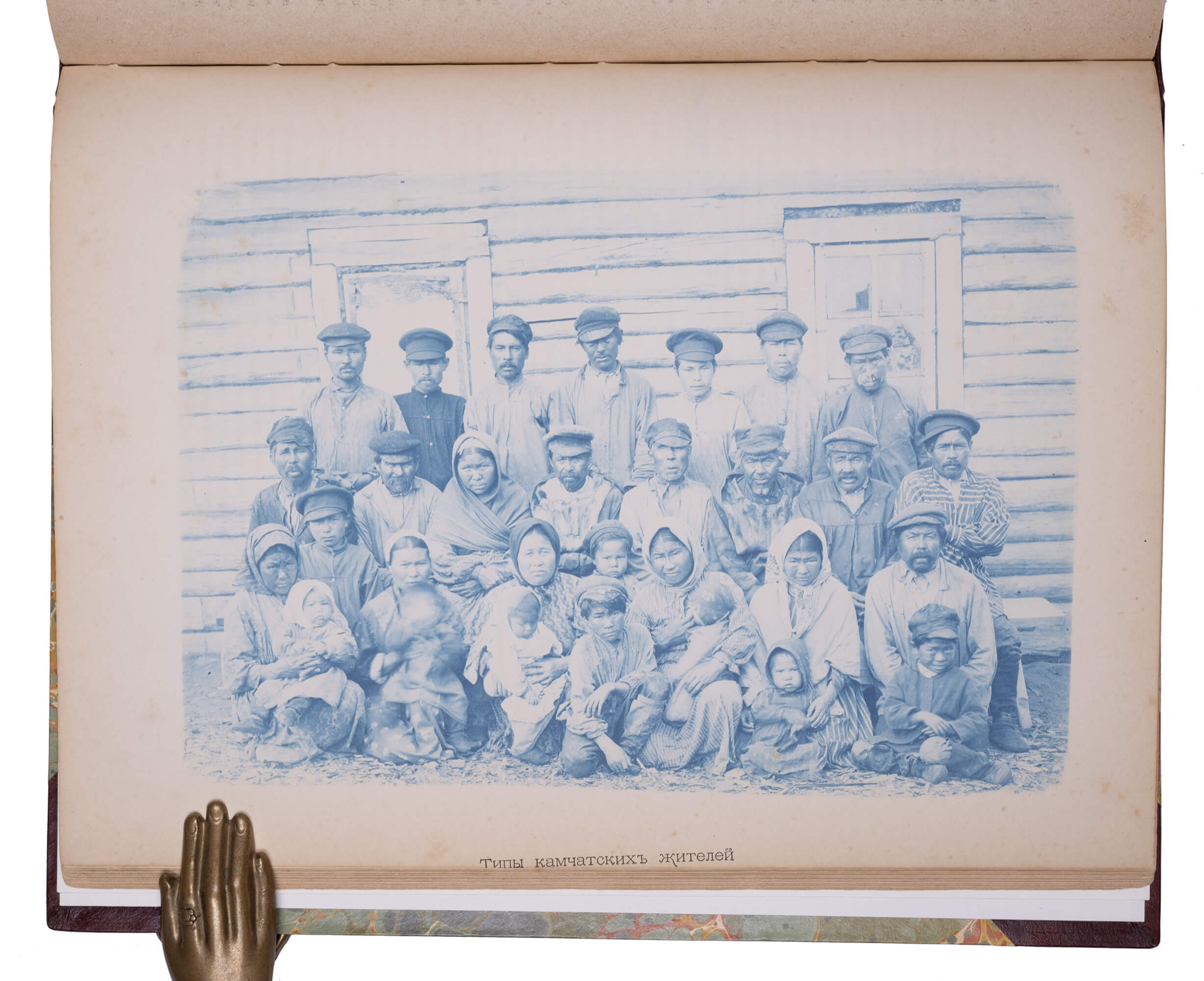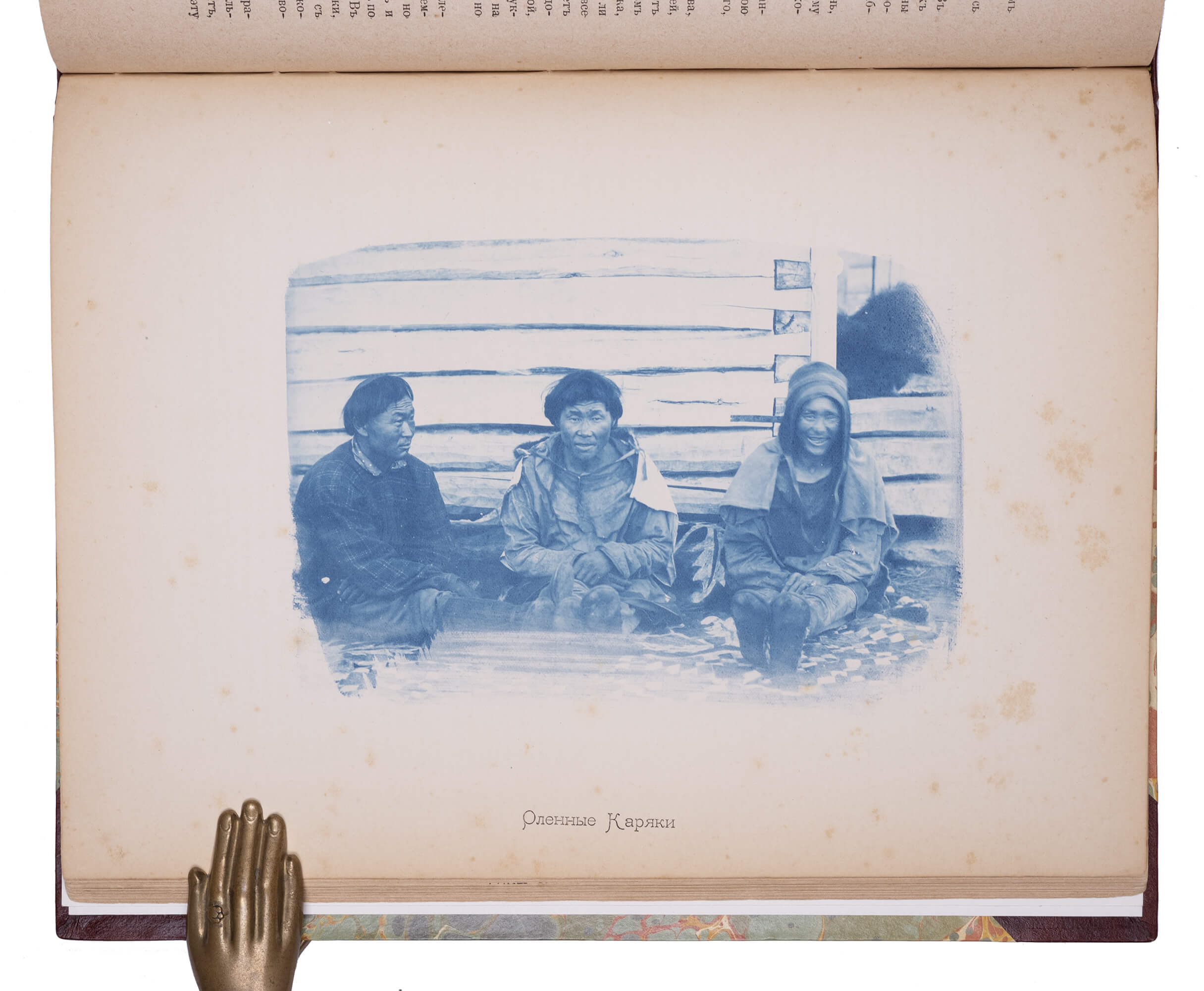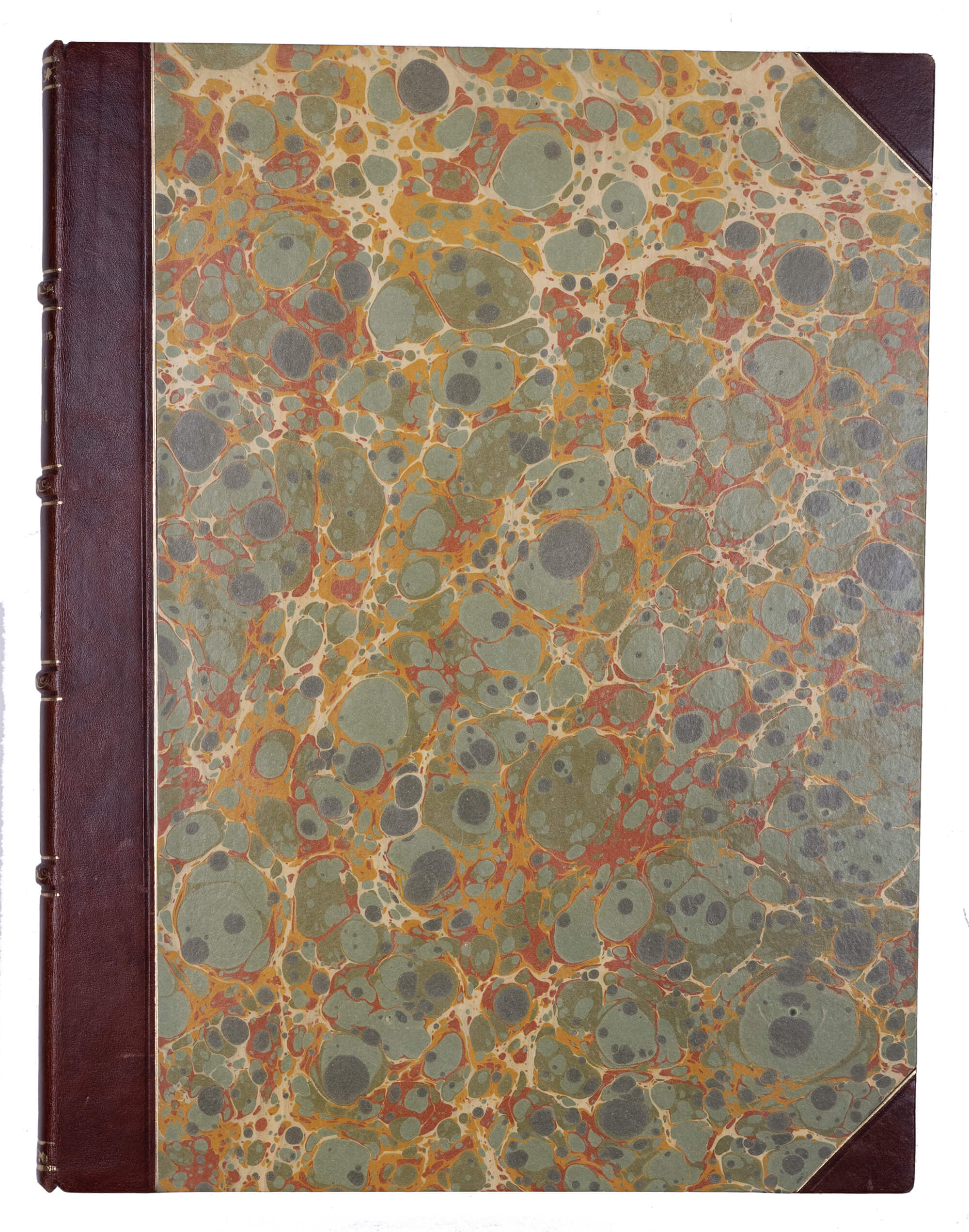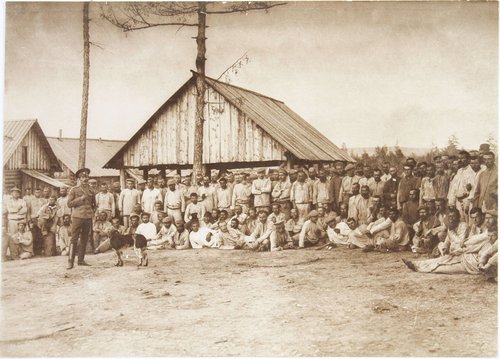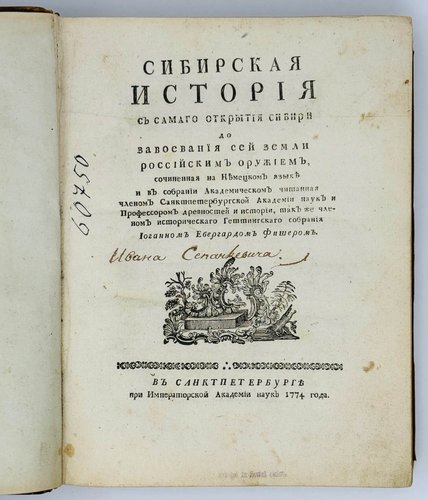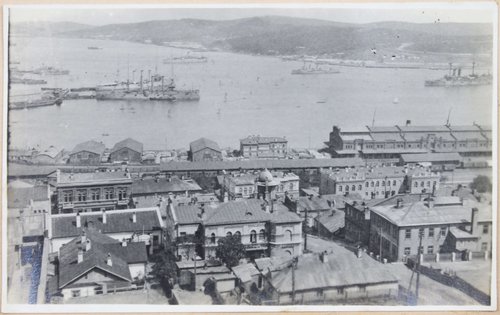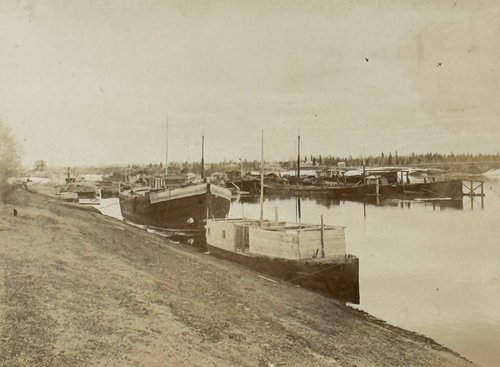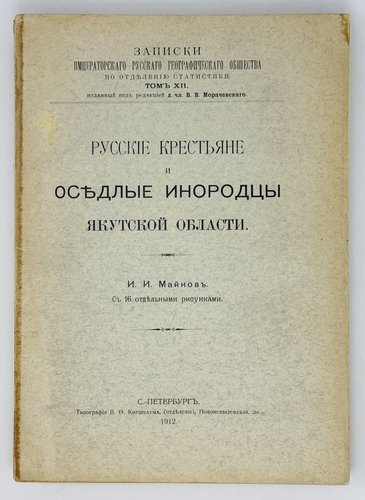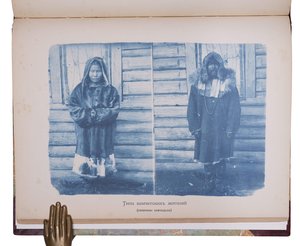
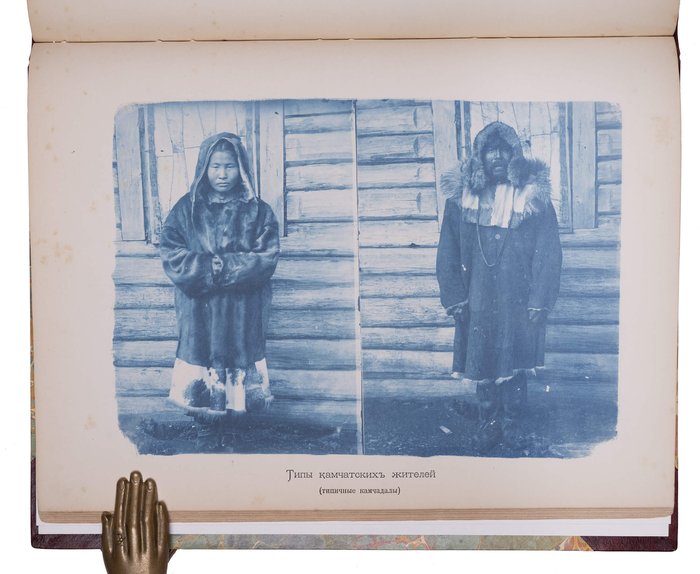
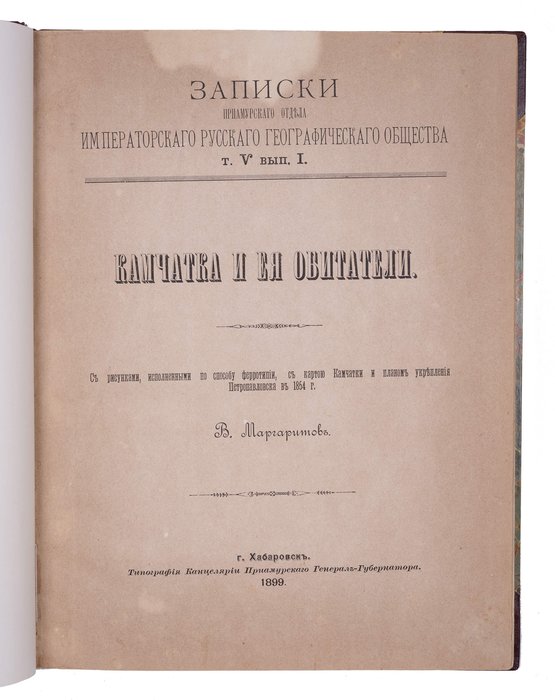
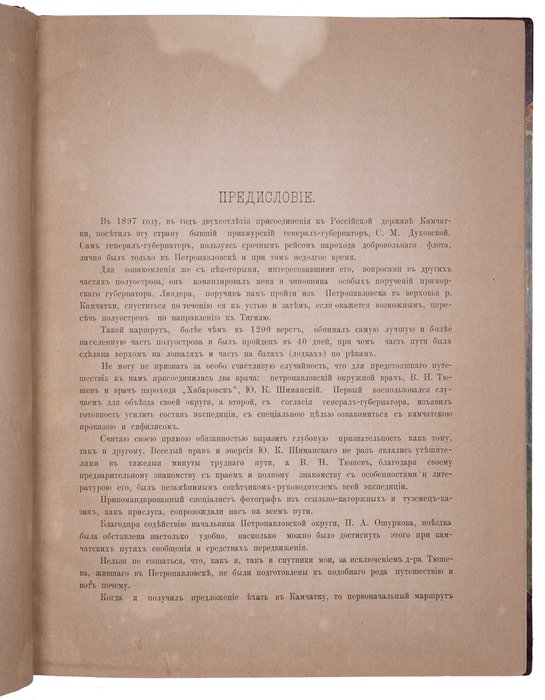
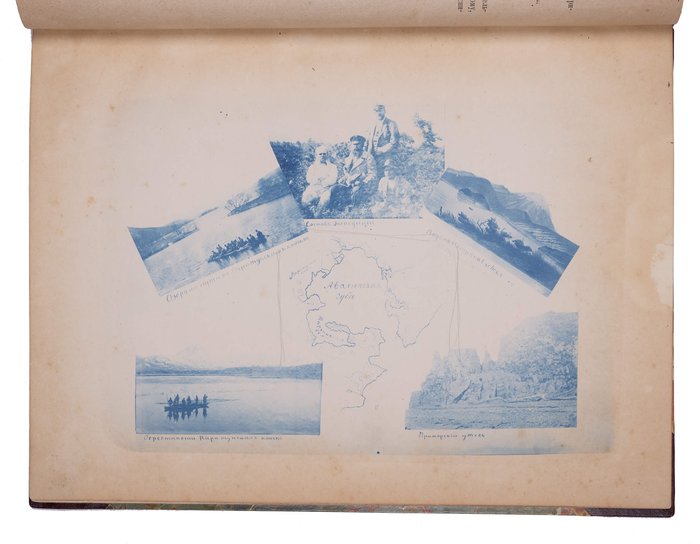
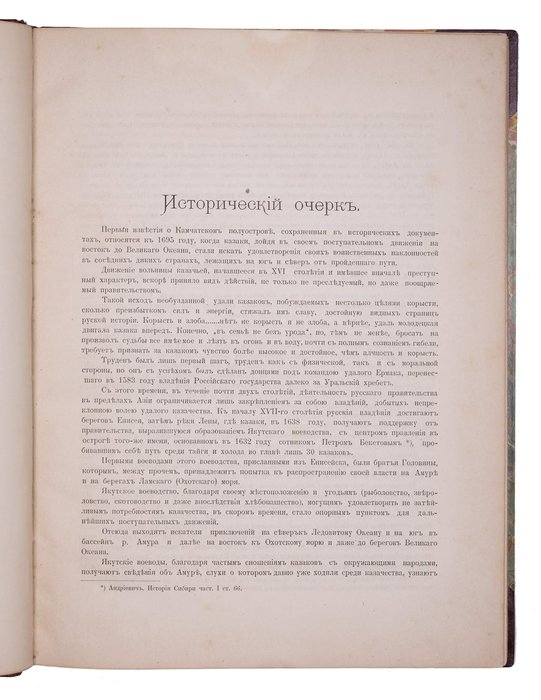
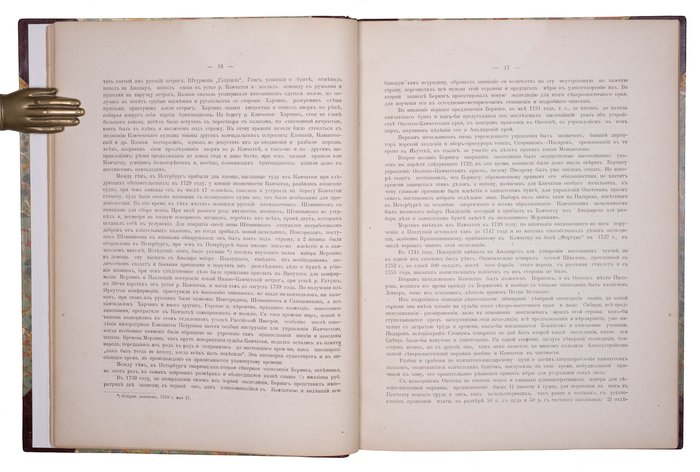
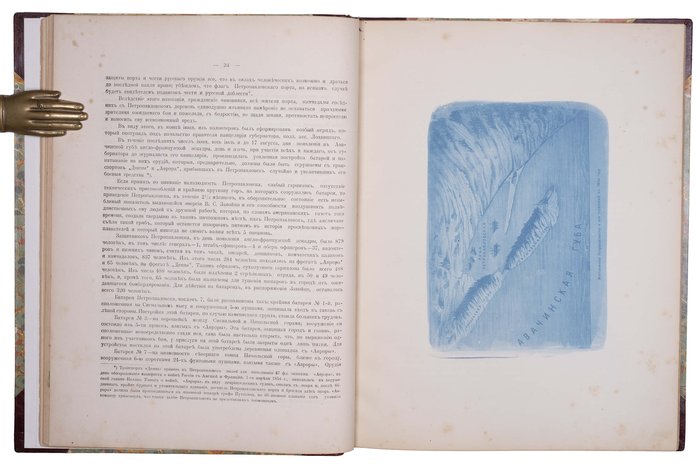
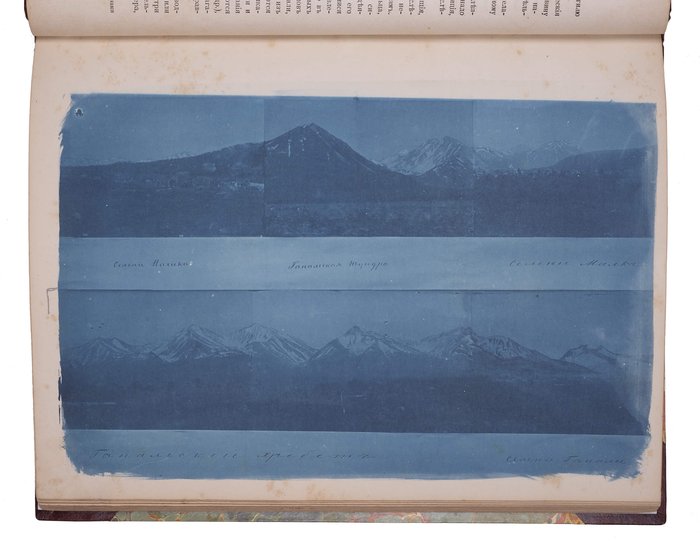
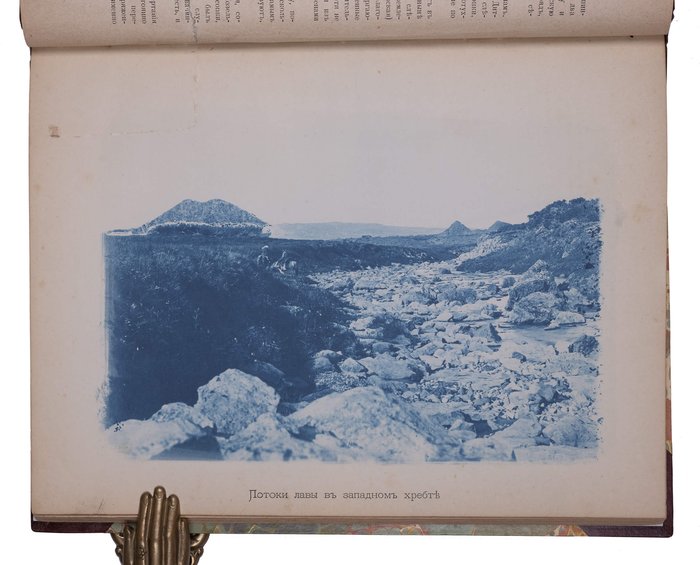
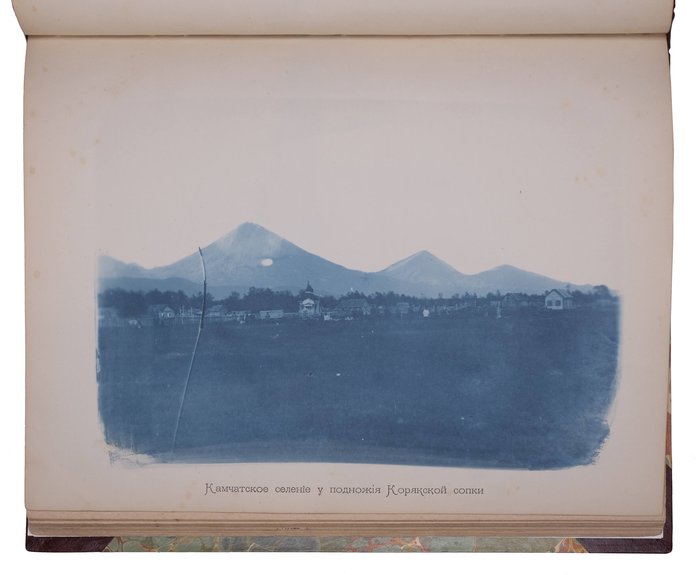
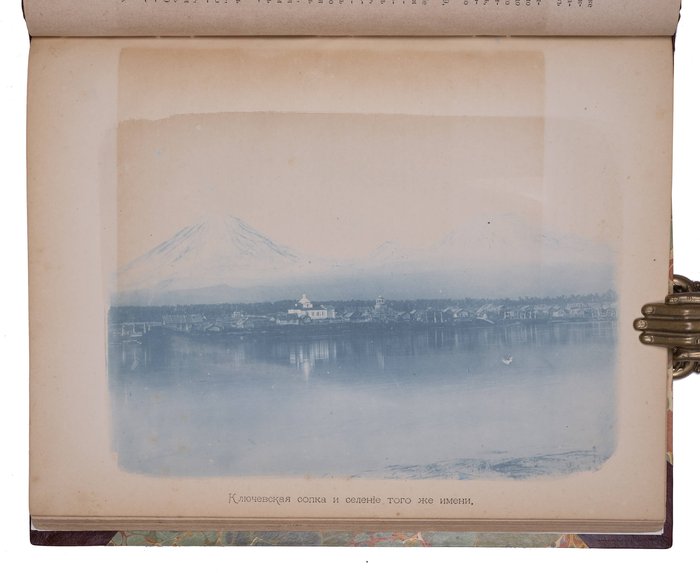
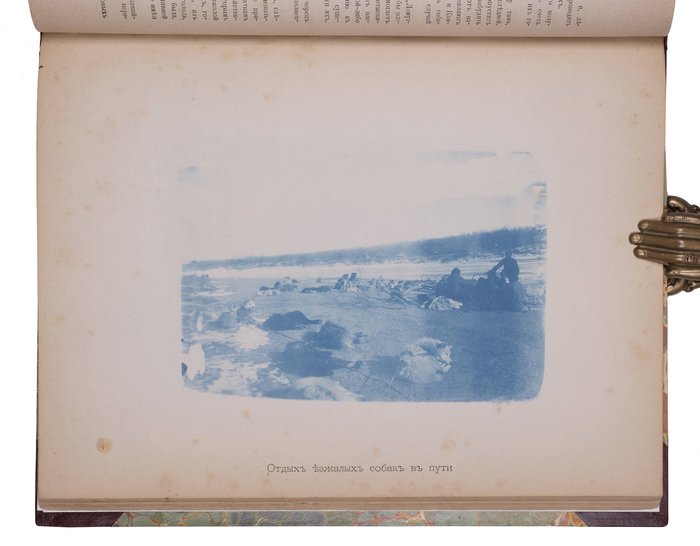
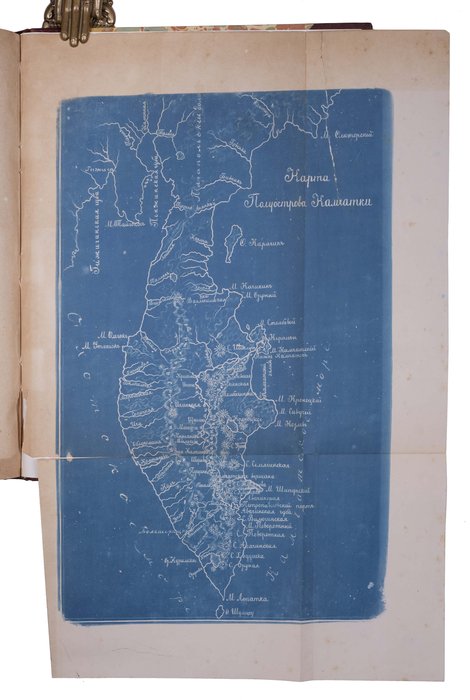
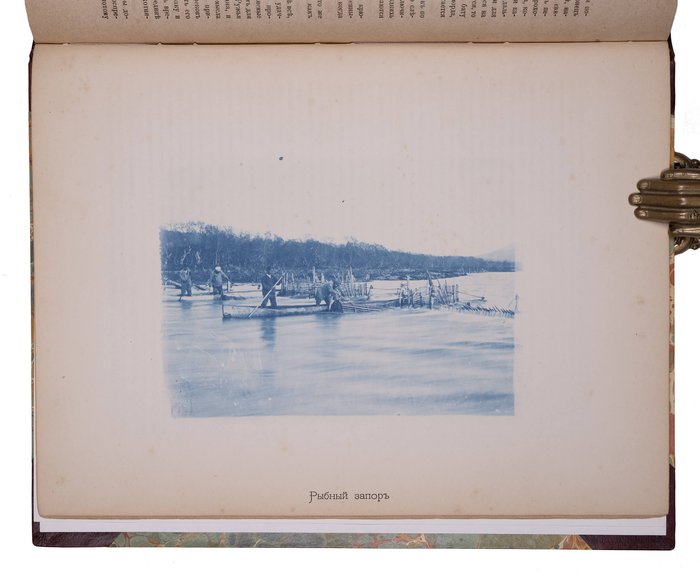
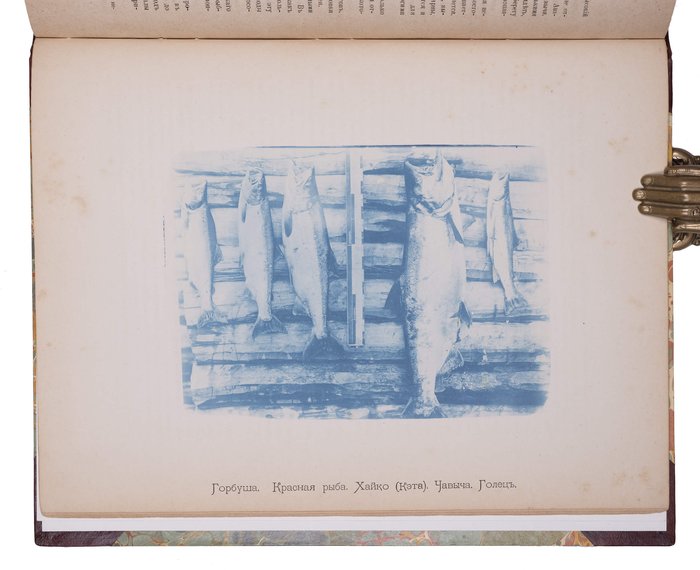
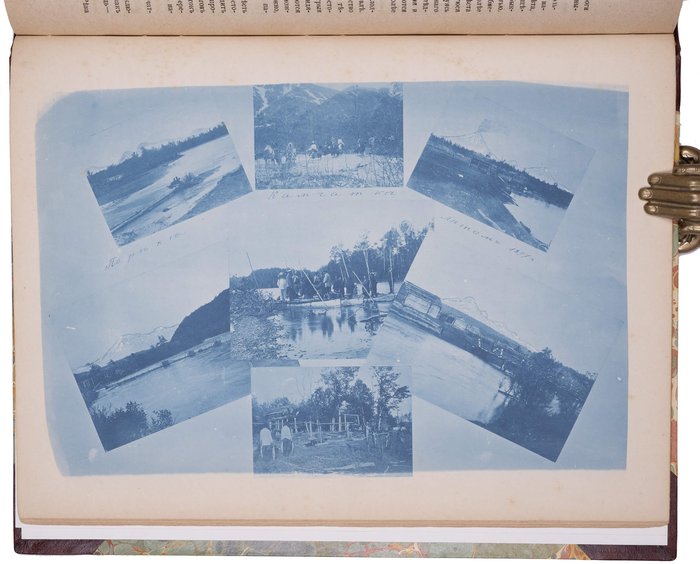

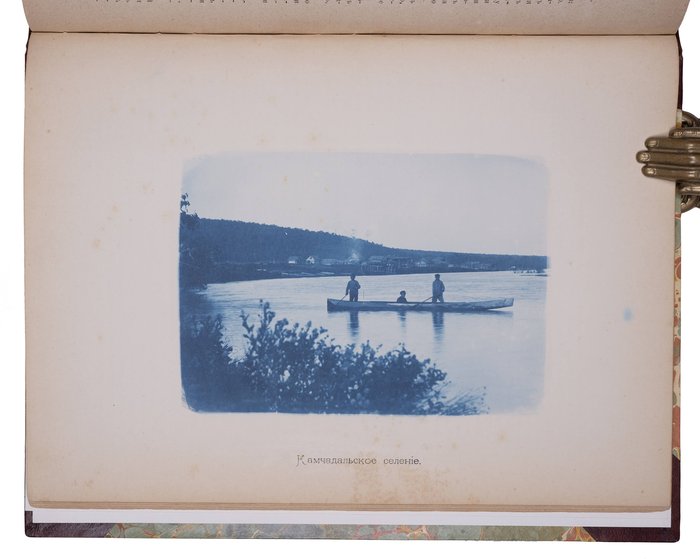
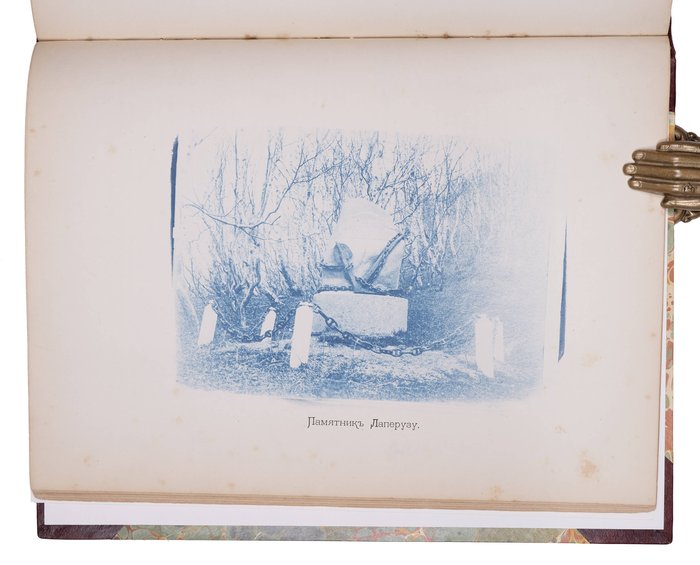
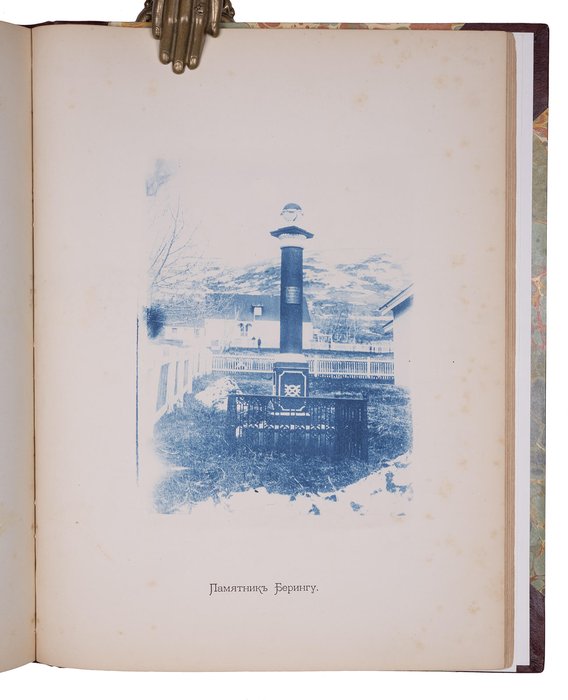

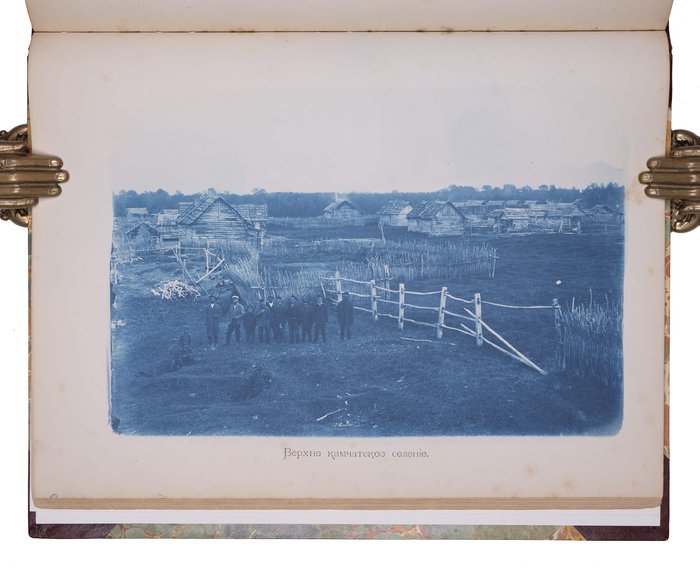
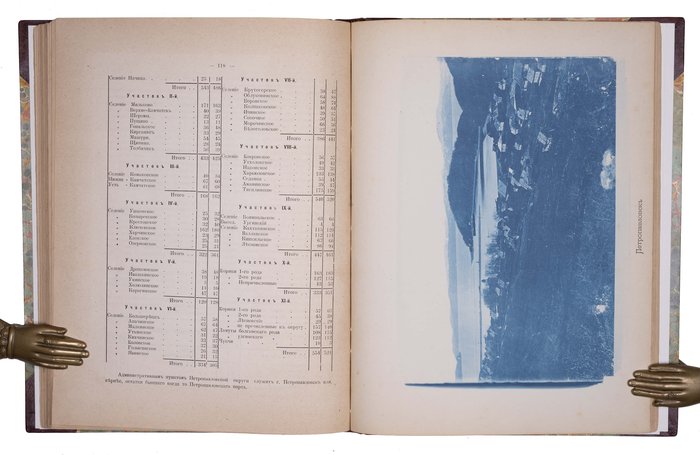
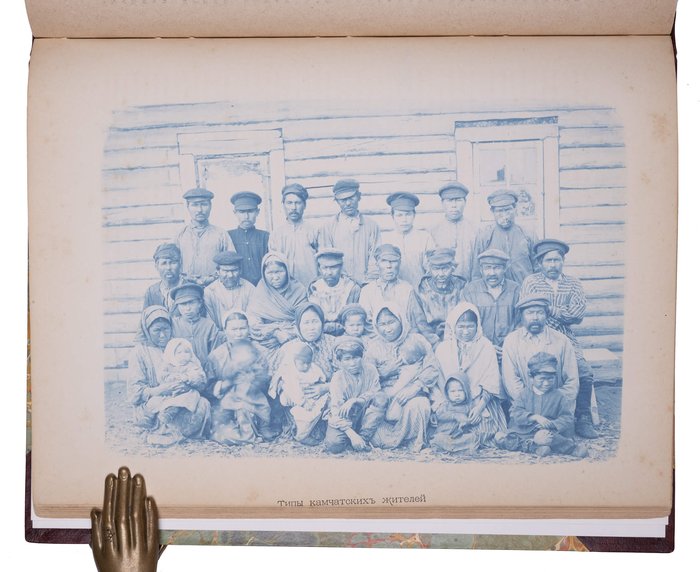

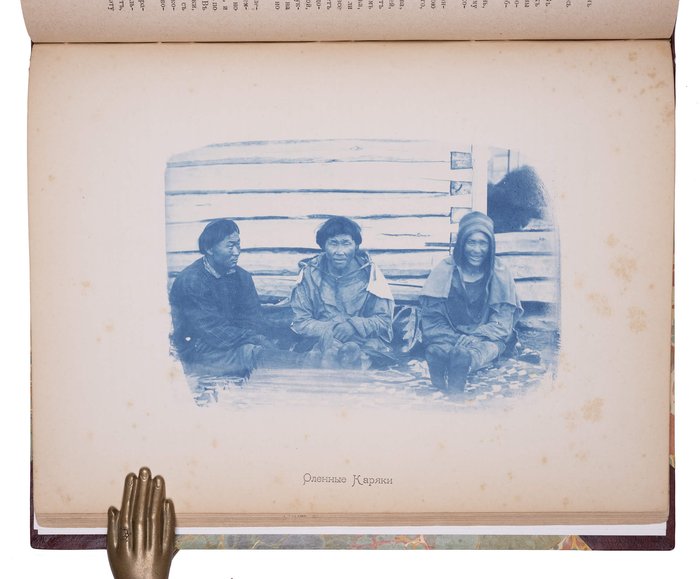
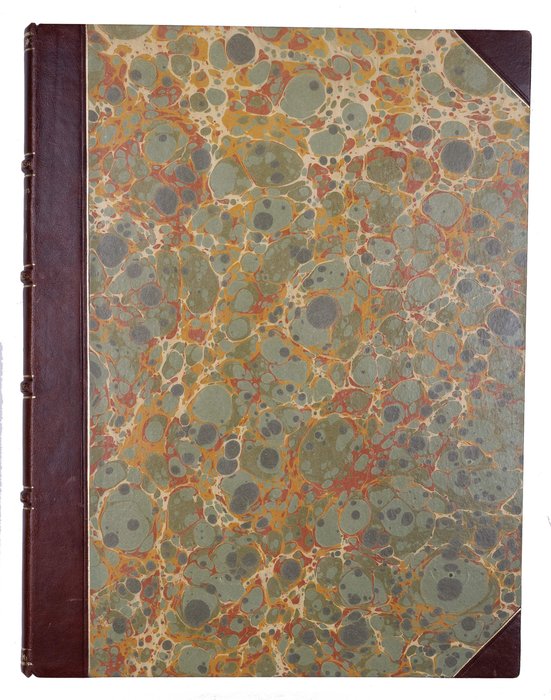
#RA51
1899
First and only edition. Quarto (ca. 29.5 x 23 cm). [2 - t.p.], iv, 141, [1 -errata] pp. With twenty-one ferrotype plates, a ferrotype map and a ferrotype plan. Period style brown half sheep with marbled papered boards, spine gilt tooled with bands and title. New endpapers. First and last few pages slightly age-toned and some mild foxing throughout, but overall a very good copy of this rare work.
Very rare Russian Far Eastern imprint with only three paper copies found in Worldcat (Stanford University, Field Museum of Natural History, University of Hawaii Manoa). The book was never reissued in Russia or translated into other languages.
Original, richly illustrated account of the expedition to Kamchatka in the summer of 1897, led by a noted ethnographer and archaeologist of the Russian Far East, Vasiliy Margaritov. Born in the family of a priest in the lands of the Don Cossacks, Margaritov graduated from the faculty of physics and mathematics of Saint Petersburg University and attained the degree of PhD in natural sciences in 1878. Since 1881, he lived in the Russian Far East, working as a teacher in the boys’ gymnasium school in Vladivostok, inspector of the schools of the Amur River Region (1894) and the head of the municipal administration (1909) in Khabarovsk. Margaritov was one of the founders of the Society of Studies of the Amur River Region and its President in 1888-1895. In 1886, he went on a scientific expedition to the Imperatorskaya Gavan (now Sovetskaya Gavan, Khabarovsk Krai), which resulted in the first special description of the Oroch/Nani people (Ob Orochakh Imperatorskoy Gavani. SPb: Typ. of the Imp. Academy of Sciences, 1888). The ethnographic artifacts he collected during the trip were presented at the Exposition Universelle in Paris in 1889.
Margaritov travelled to Kamchatka in the summer of 1897 on the order of Governor General of the Amur River Region, Sergey Dukhovsky (1838-1901, in office: 1893-1898). The party included Vladimir Tyushov (1866-1936), a doctor from Petropavlovsk, who later published an account of his life in Kamchatka (Po zapadmonu beregu Kamchatki. SPb., 1906, and others), an associate of the governor’s office, a doctor from the steamer “Khabarovsk” Yury Shimansky, a photographer (one of the exiles from the European Russia), local guides and porters, &c. The expedition went from Petropavlovsk to the headwaters of the Kamchatka River, sailed down to Ust-Kamchatsk, and then went east across the Sredinny/Middle Mountain Range and down the Tigil River to its mouth at the Shelekhov Bay of the Sea of Okhotsk.
Margaritov’s account consists of three chapters. The first chapter is an overview of Kamchatka’s history, from its conquest by the Russian Cossacks in the 16th-17th centuries to the author’s days. Based on classical historical books and documents from Russian archives, this chapter covers the voyages of Semyon Dezhnyov, Vladimir Atlasov, Vitus Bering, Krenitsyn and Levashov, foundation of Russian fur hunting companies on the Aleutian Islands (by Shelekhov, Golikov and others), establishment of the Russian American Company, first Russian circumnavigation under the command of Krusenstern and Lisiansky, the attack of Petropavlovsk by English and French ships in 1854, &c.
The second chapter is dedicated to the geography and natural history of Kamchatka – geology and volcanic activity, climate, flora and fauna, progress of agriculture and cattle breeding. Very interesting are the original accounts of Vladimir Tyushov’s ascent to the Avachinskaya Sopka/volcano in February 1895 (pp. 52-54) and the expedition party’s ascent to the Klyuchevskaya Sopka/volcano in July 1897 (pp. 57-59). The text also contains a statistical table of grain sowing and harvest in Kamchatka in 1763-1766. As a supplement, there are annotated lists of Kamchatka mammals, birds, fish and plants (pp. 74-103).
The third chapter describes the life of the indigenous people of Kamchatka, as witnessed by the author. There is a detailed description of the Koryaks (sub-groups, areas of settlements, appearance, occupations, manners and customs, native beliefs, dwellings, &c.); shorter notes are given about Aleuts, Kuriles, and Chukchi. A statistical table (pp. 117-118) lists all Kamchatkan settlements with the indication of the number of men and women in each. The author also talks about the urban structure of Petropavlovsk and its administrative system, Kamchatkan fishing and hunting industries, the Russian Orthodox Church in the region, public education, and medical services (including treatment of syphilis and leprosy).
The book is illustrated with ferrotype reproductions of twenty-one original photos taken during the expedition, including views of Petropavlovsk, Koryakskaya and Klyuchevskaya Sopkas, native villages, portraits of Koryaks and expedition members, &c. According to the preface, the expedition photographer took over 200 photos “in the sites where a photographic camera was seen for the first time” (preface, p. II). The publication of their selection in the book “became possible due to the assistance of the current Governor General of the region, N.I. Grodekov” (preface, p. III).
Overall a historically significant, rare, richly illustrated account of a trip to Kamchatka in 1897.
A list of ferrotype illustrations (twenty-one photo reproductions, one map and one plan):
1) [Combination of five photos]: Expedition members; A view of Petropavlovsk from the Rakov Cape; Primorsky Rock; Environs of the Paratunskiye Hot Springs; A lake on the way to the Paratunskiye Hot Springs. With: a Plan of the Avacha Bay.
2) Petropavlovsk and its fortifications in 1854.
3) [Two panoramic photos]: Ganalskaya tundra (with Malka and Nachiki villages); Ganalskiy Mountain Range (with Ganaly village).
4) Lava flow on the western range.
5) Kamchatka village at the foot of the Koryakskaya Sopka (volcano).
6) Klyuchevskaya Sopka and a village of the same name.
7) Sled dog resting on the way.
8) Nomad (reindeer herders) Koryaks.
9) Koryak female shaman.
10) Dwelling of a poor Kamchadal.
11) Types of Kamchatka inhabitants.
12) Types of Kamchatka inhabitants (typical Kamchadals).
13) Petropavlovsk.
14) A village in the upper Kamchatka.
15) “Slava” [“Glory”] obelisk [in memory of the fallen defenders of Petropavlovsk during the attack of the Anglo-French naval squadron in 1854].
16) A monument to Vitus Bering.
17) A monument to Laperouse.
18) Kamchatka village.
19) Milkovo village.
20) [Combination of seven photos]: On the Kamchatka River in the summer of 1897.
21) Gorbusha. Red fish. Haiko (Keta). Chavycha. Golets [Pink salmon. Coho salmon. Chum salmon. Chinook salmon. White char].
22) Fish weir.
23) Map of Kamchatka peninsula.

